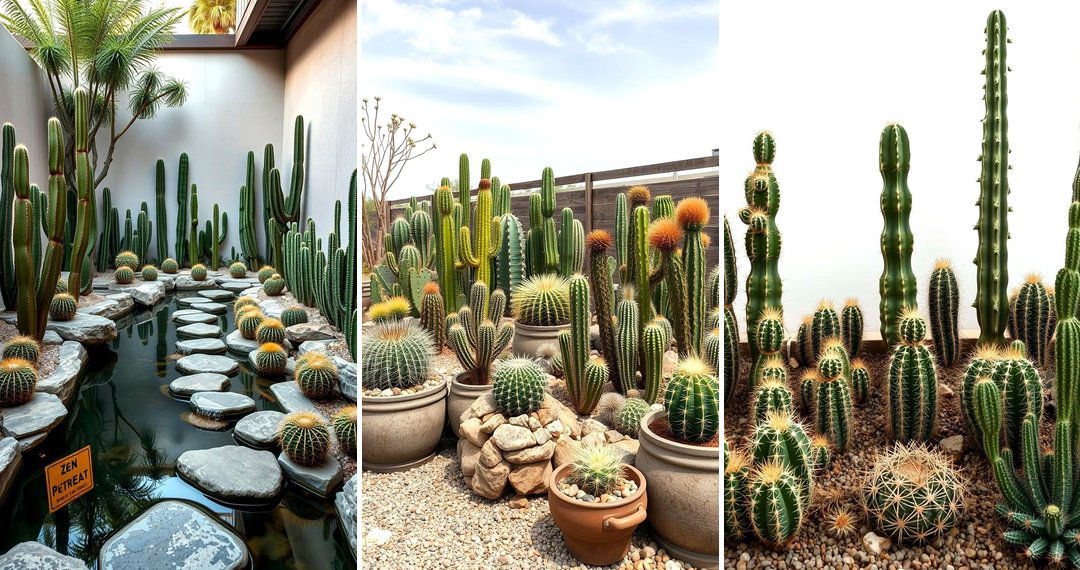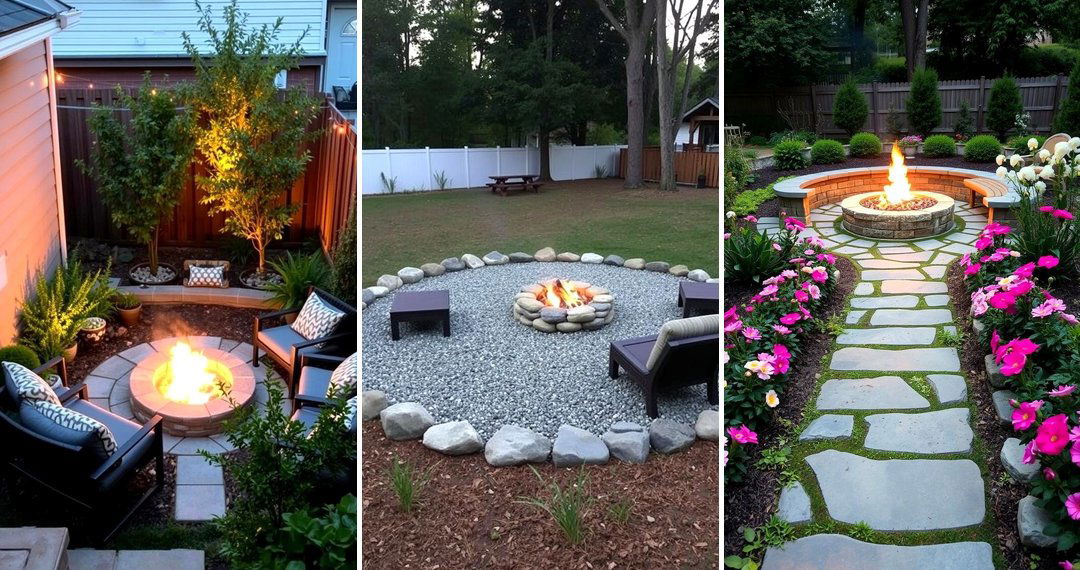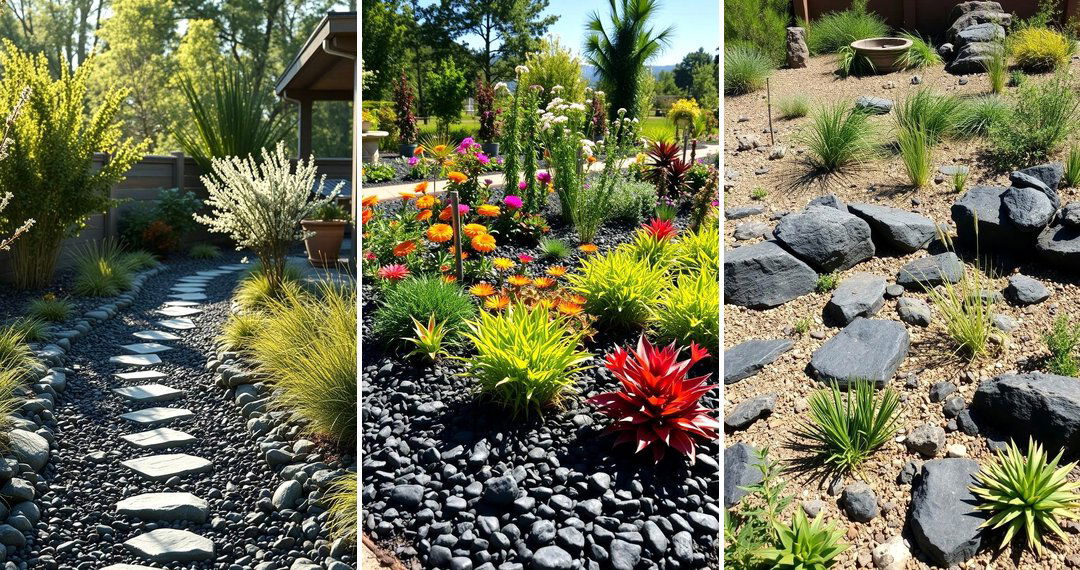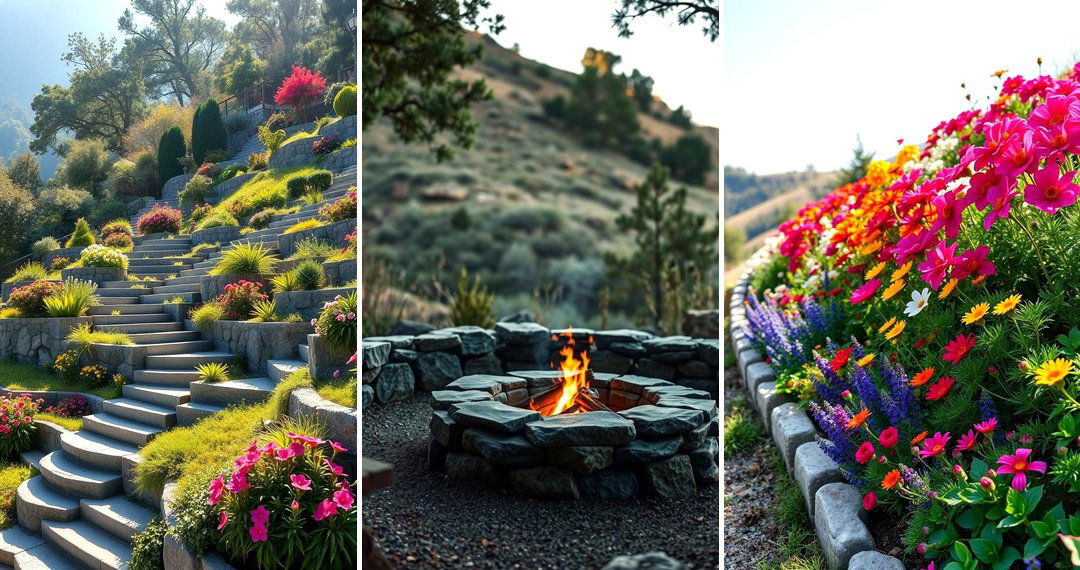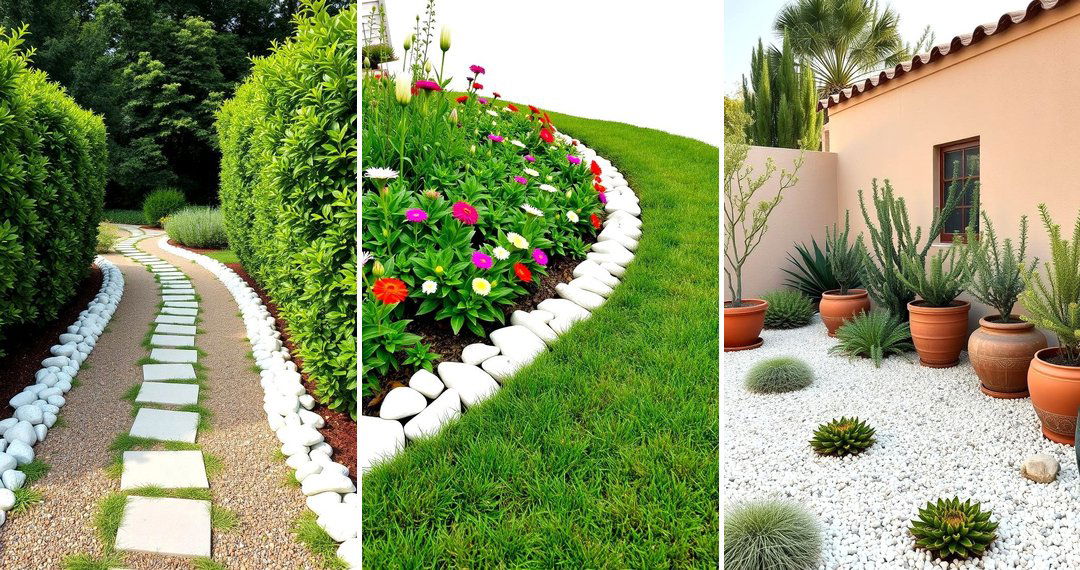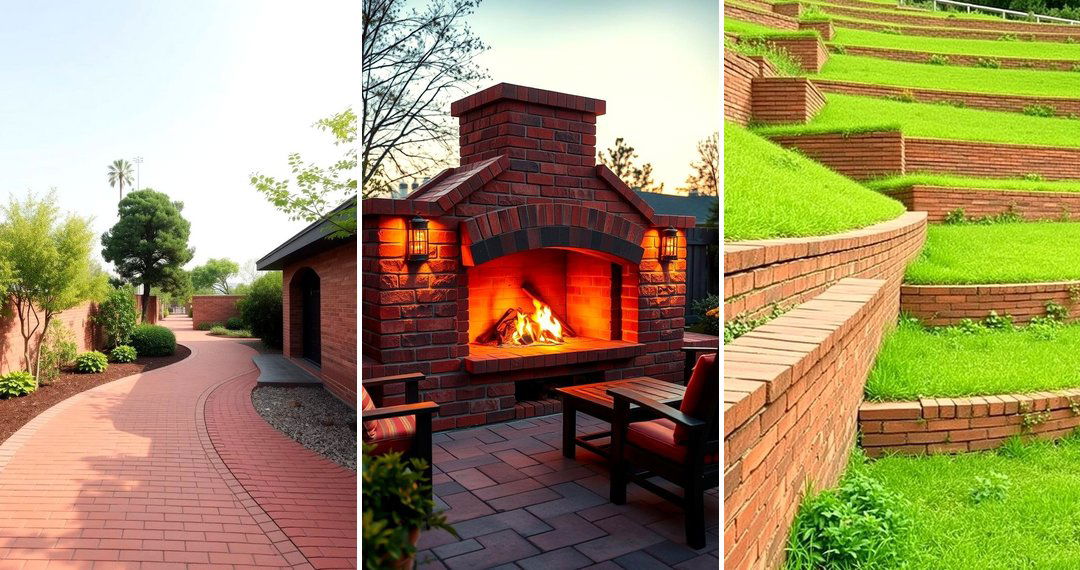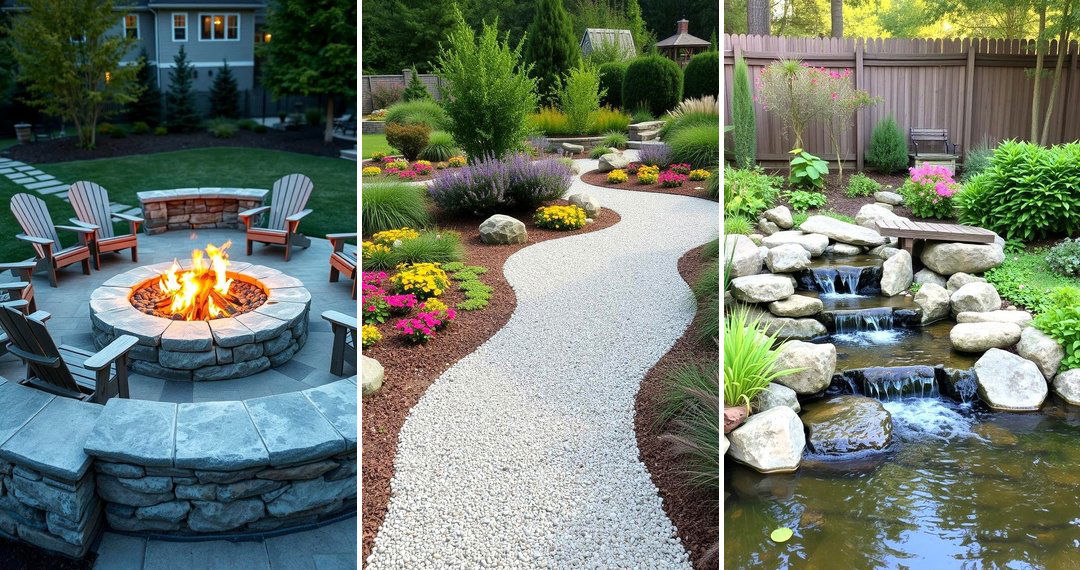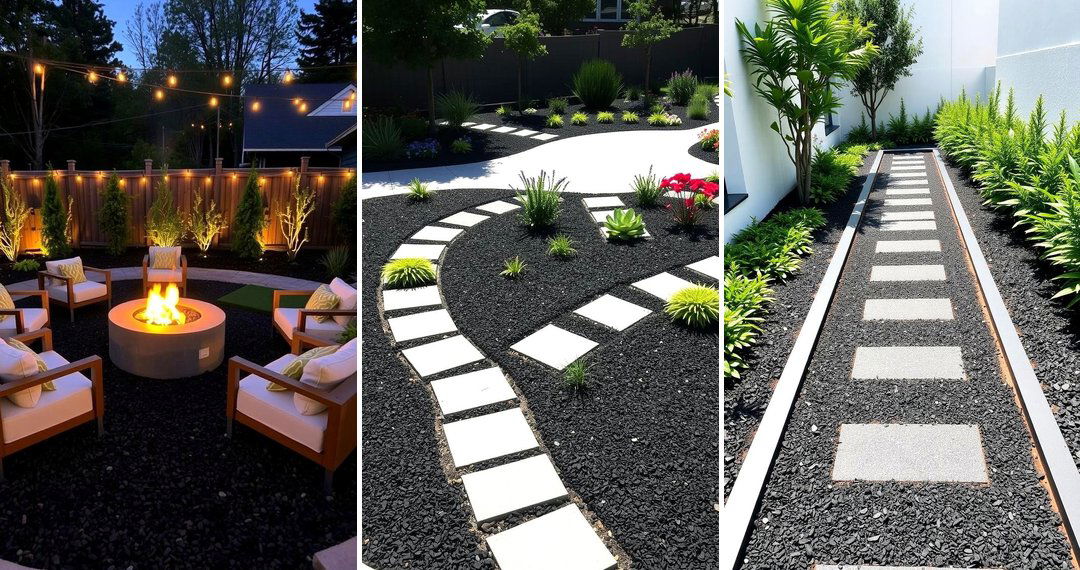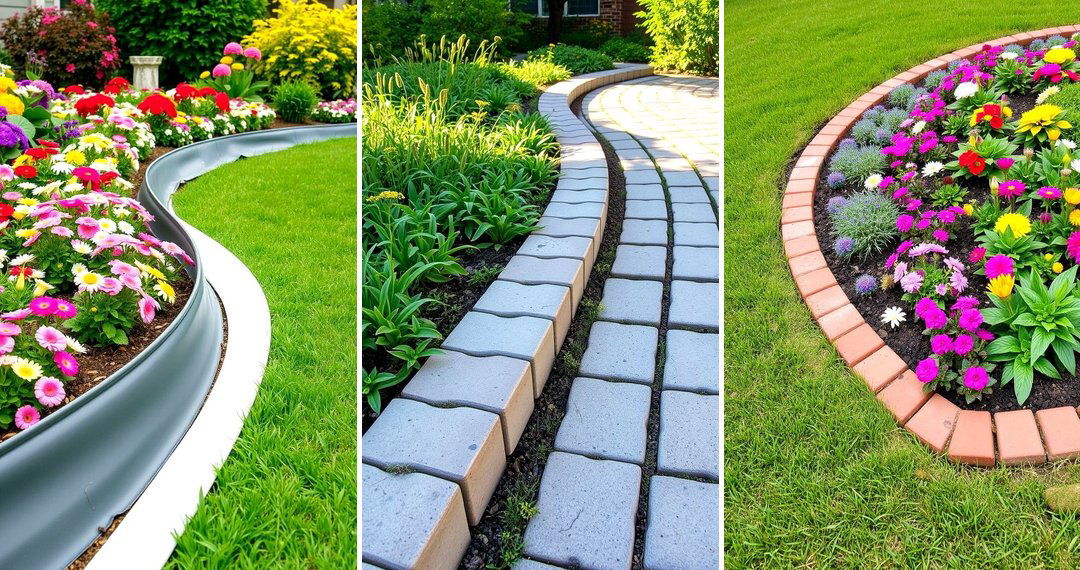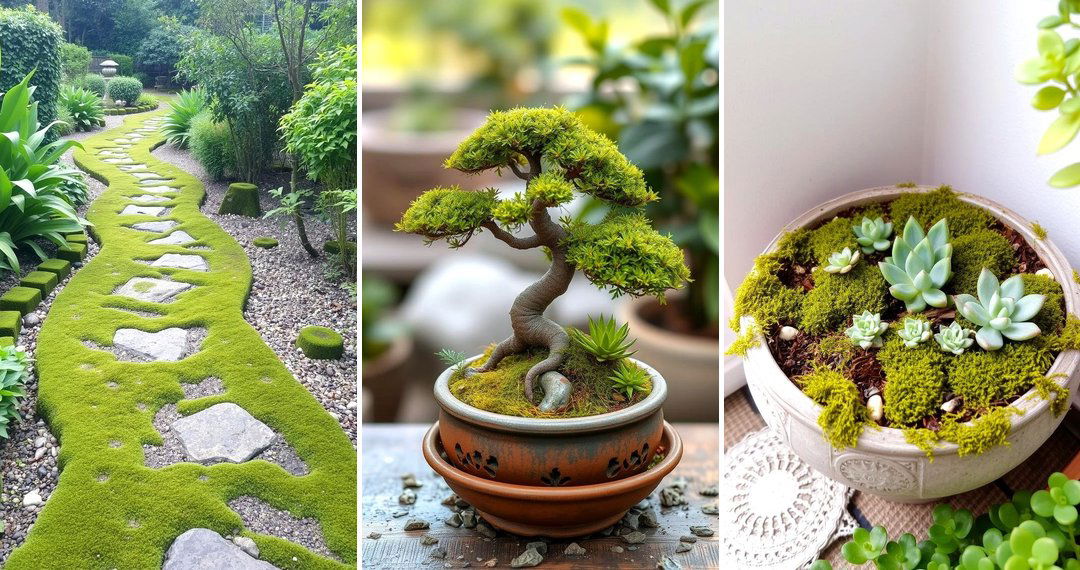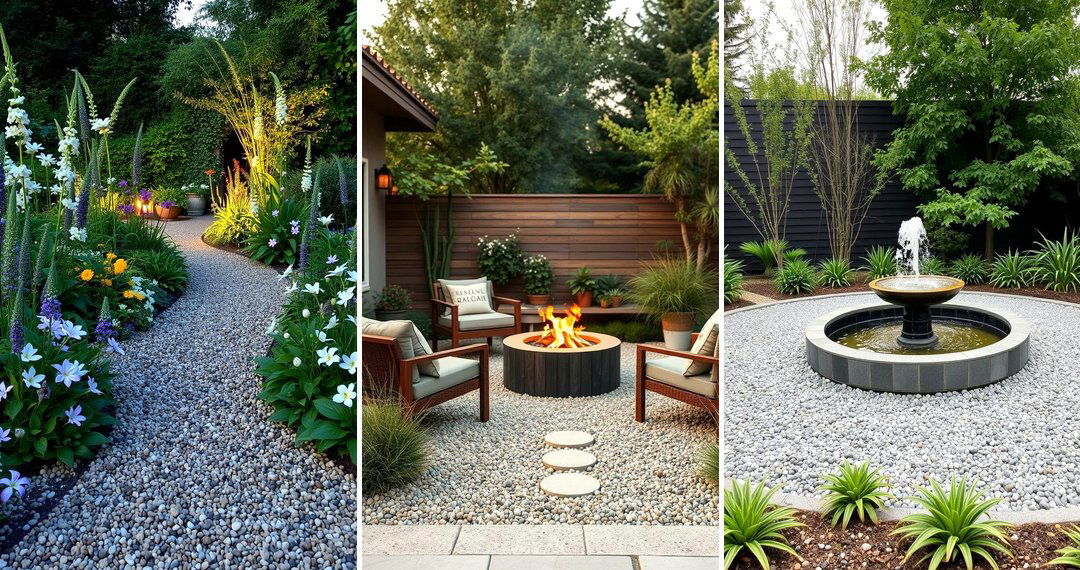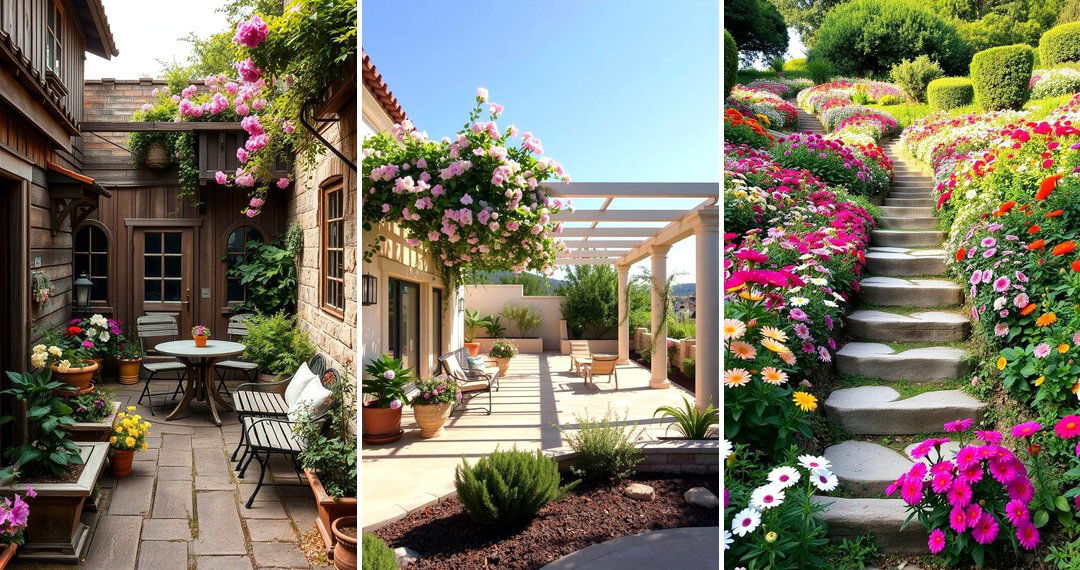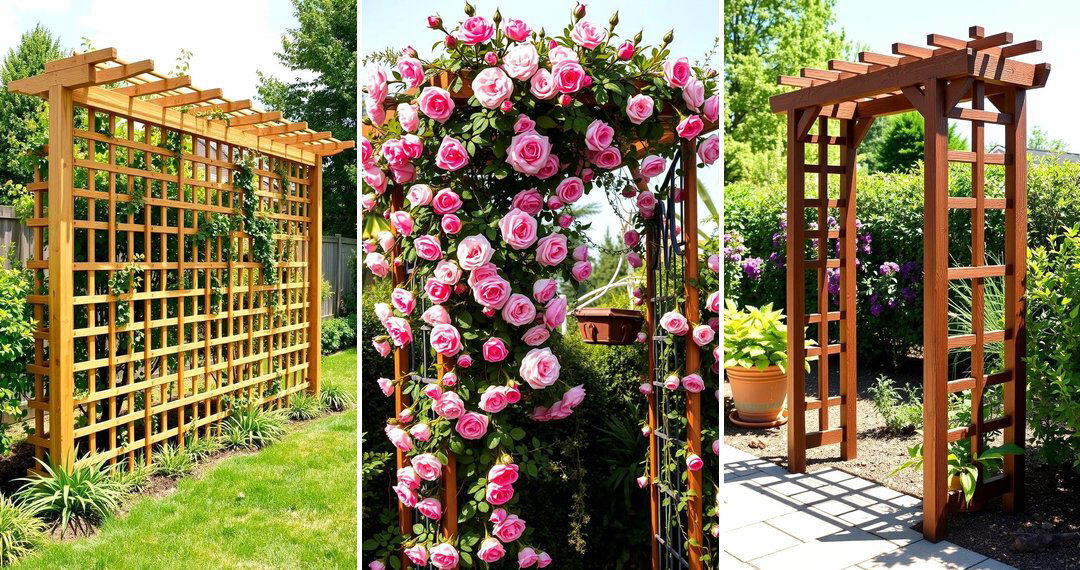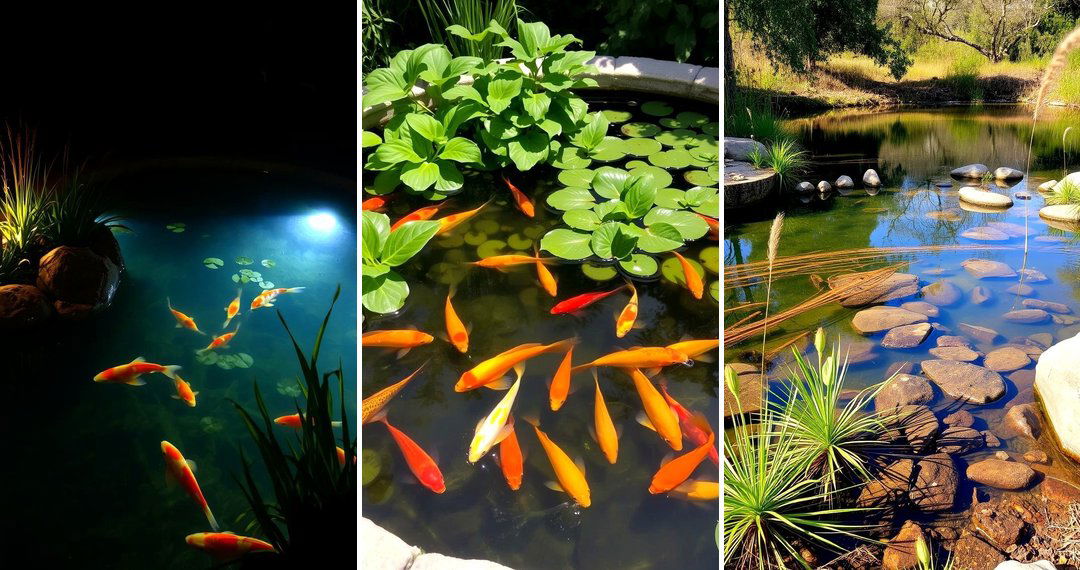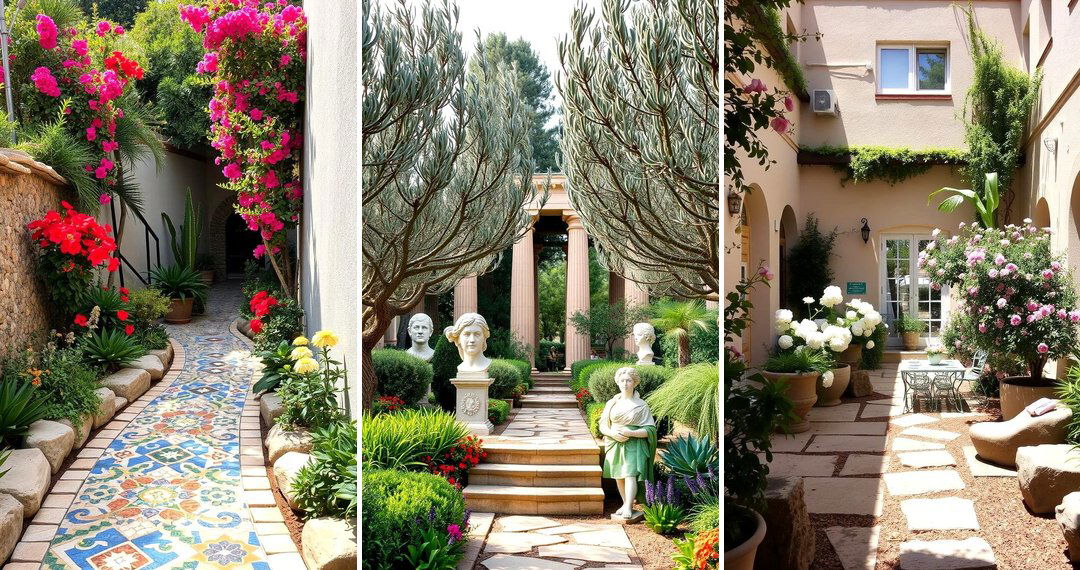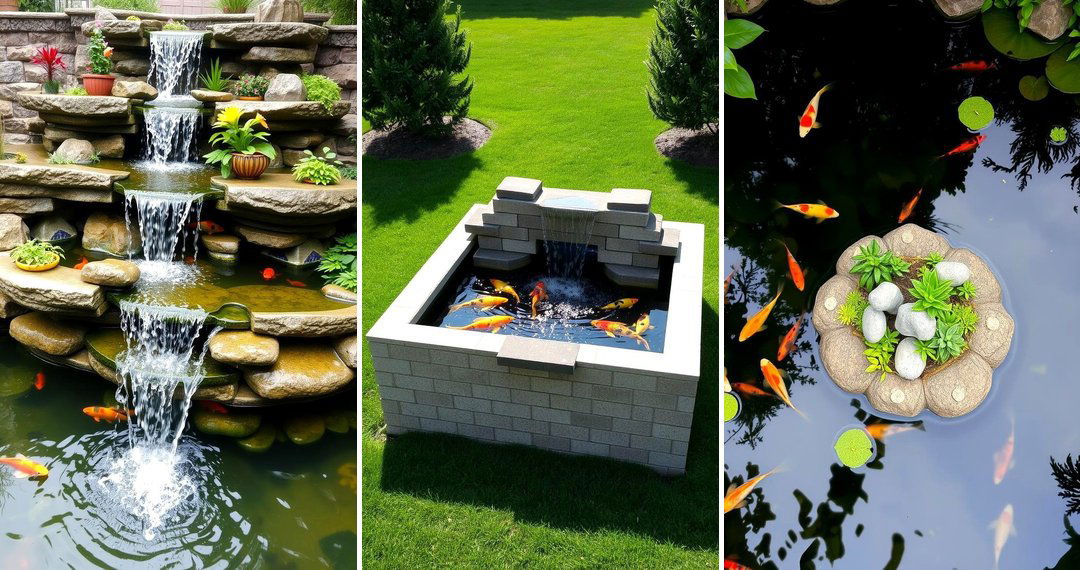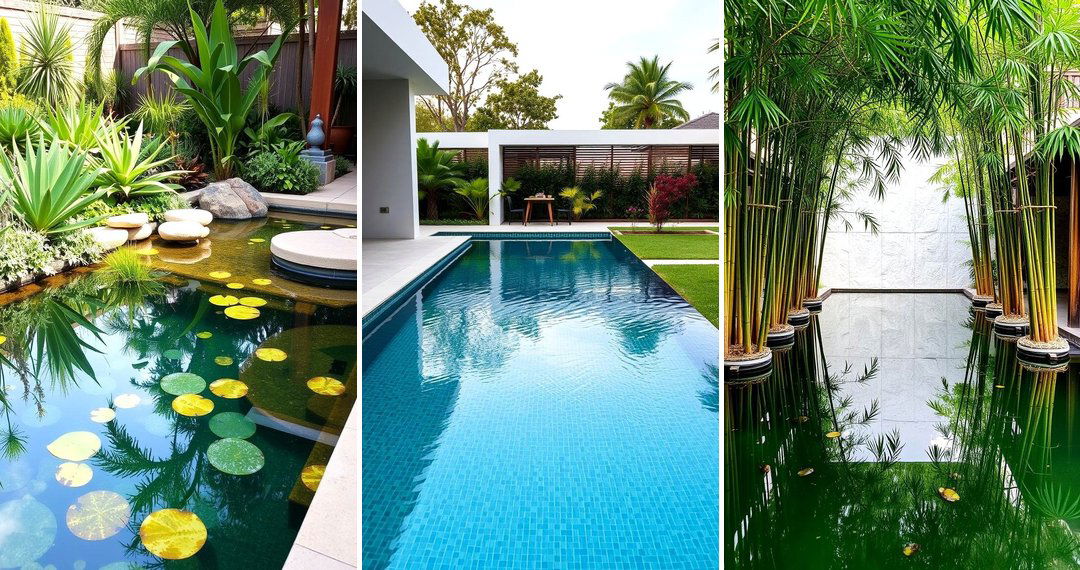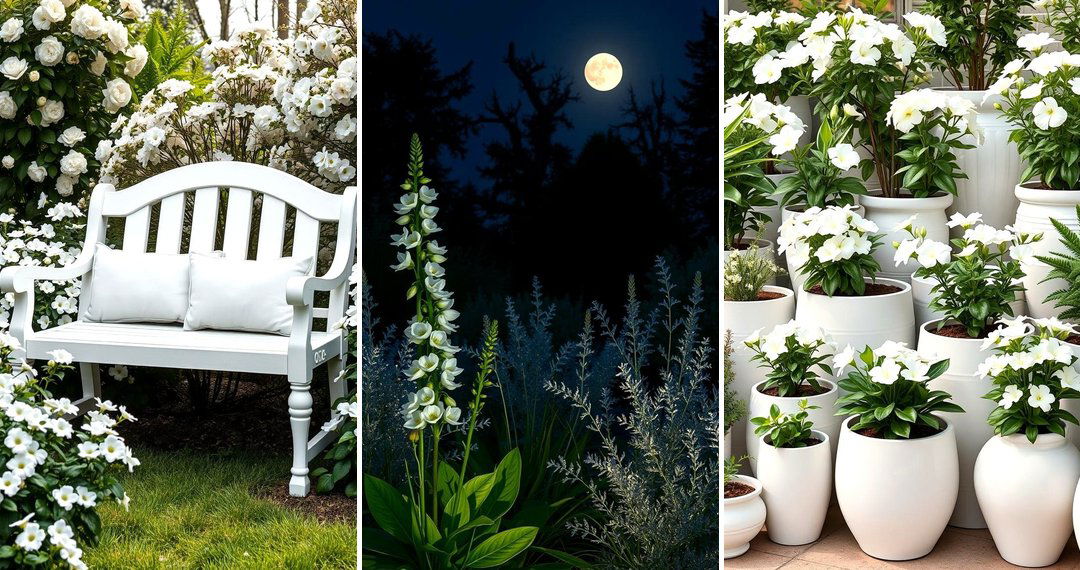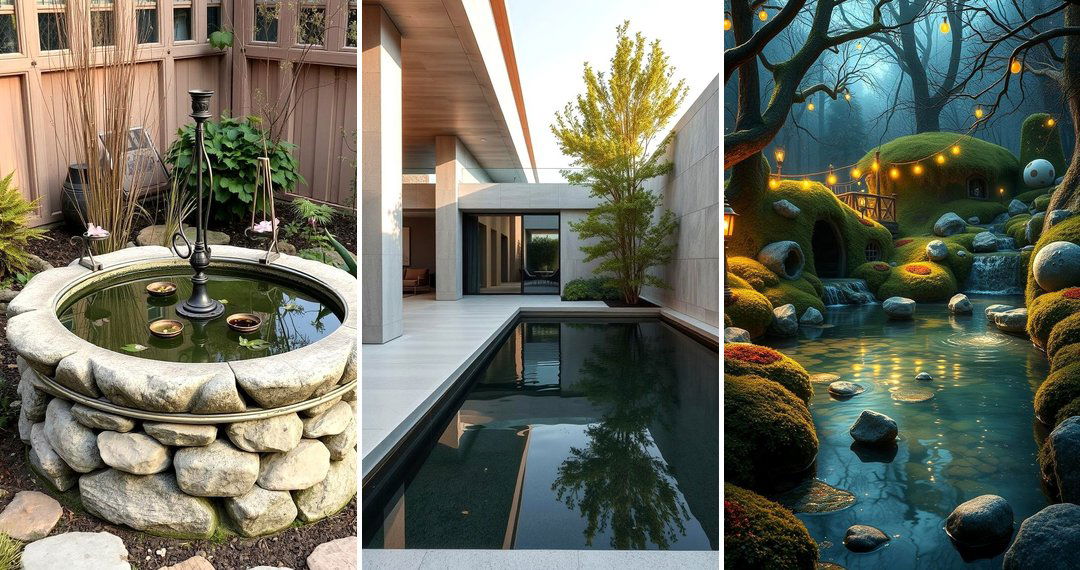Asian gardens are renowned for their tranquility, beauty, and balance. From the Zen-inspired minimalist designs to lush tropical retreats, Asian landscaping offers diverse and imaginative ways to transform outdoor spaces. Whether you are aiming for a serene retreat, a vibrant garden, or a harmonious blend of both, Asian landscaping ideas provide a wealth of inspiration. In this collection, we explore 24 unique ideas, each offering practical advice on how to incorporate Asian elements into your landscape. Whether you’re working with a small urban space or a sprawling garden, there’s a design element for everyone. Explore the beauty and peace that Asian landscaping can bring to your outdoor space.
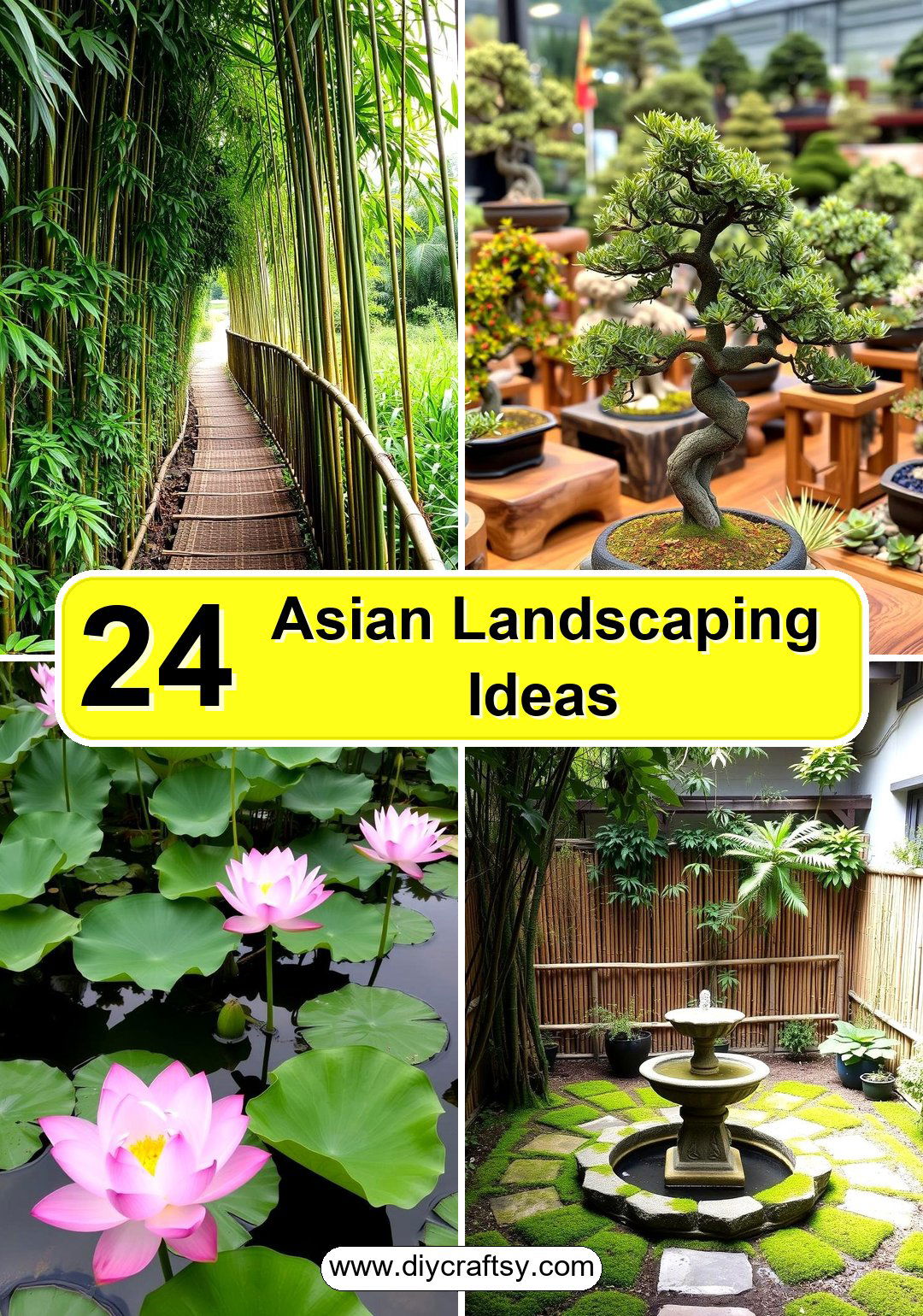
1. Zen Garden

Picture stepping into a serene space where simplicity reigns, and every element serves a purpose. A Zen garden is a peaceful retreat, where rocks, gravel, and minimalist plants promote contemplation and calm. The design centers around balance and simplicity, with the raked gravel mimicking water and the rocks representing elements like mountains. The benefits are plentiful: low maintenance, a calming aesthetic, and a space designed for mindfulness. Creating one in your yard can help you unwind and reflect, offering a perfect escape from the everyday hustle.
2. Japanese Tea Garden
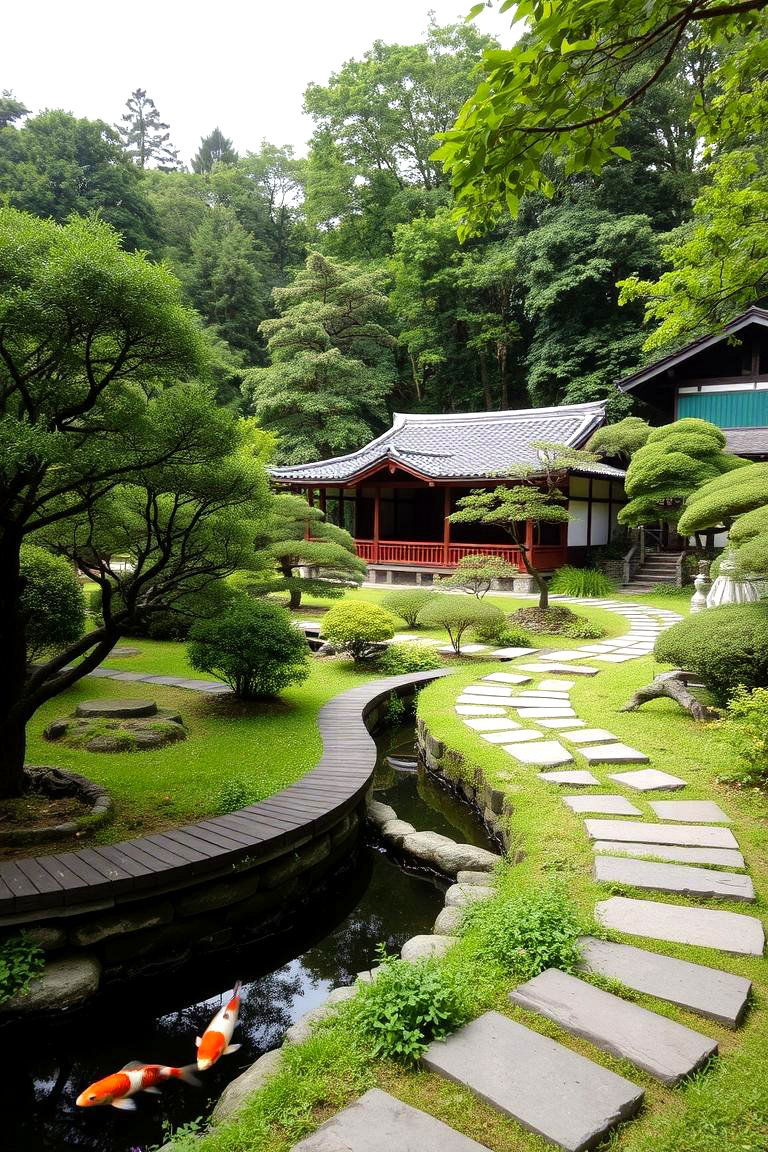
The Japanese tea garden is a beautiful blend of natural elements and architectural grace. This space is typically designed with winding paths, koi ponds, and tea houses that evoke a sense of peace. The main benefit of this landscaping style is that it invites visitors to slow down and enjoy the simplicity of nature. Paths lined with stepping stones encourage slow, deliberate movement, while lush plants like moss and bonsais create a tranquil environment. Ideal for hosting small gatherings or meditative tea ceremonies, it’s a wonderful way to bring a touch of tradition to your backyard.
3. Bamboo Garden
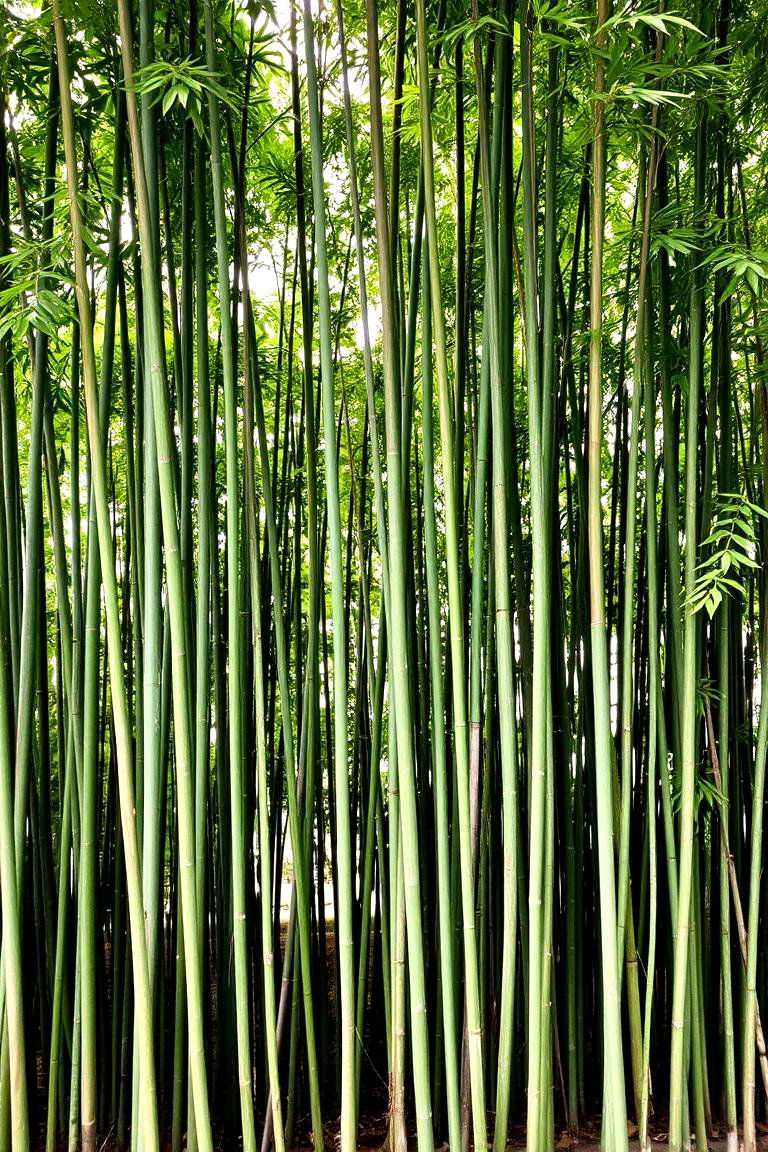
Bamboo is a symbol of strength and flexibility, and incorporating it into your garden can provide a lush, green atmosphere. Bamboo gardens are low-maintenance and can grow quickly, providing both privacy and a natural look. Bamboo's ability to grow tall and dense makes it perfect for creating fences or screens, shielding your garden from prying eyes. It also adds an exotic, tropical feel, especially when paired with other plants like ferns or small water features. The main benefit is that it helps establish natural boundaries while being visually striking.
4. Pond Garden
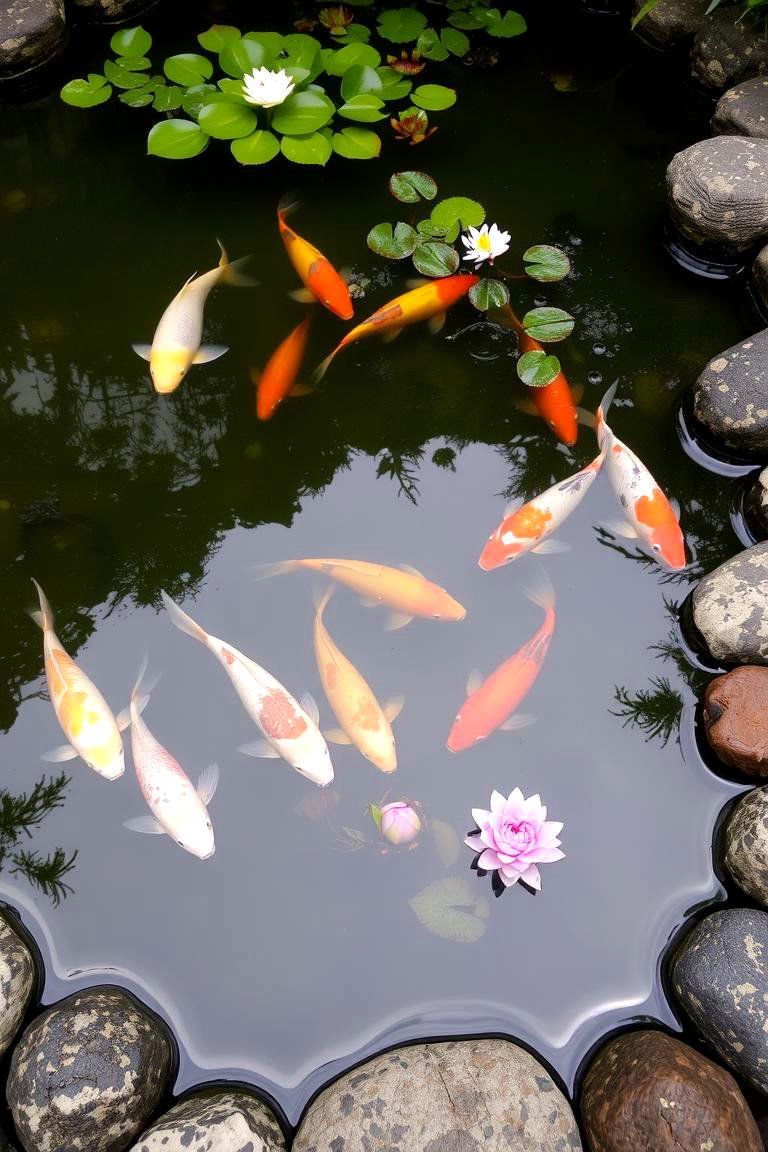
Water plays a central role in many Asian landscapes, and a pond garden is a beautiful way to incorporate this element. Small ponds surrounded by rocks, plants, and koi fish can create a peaceful atmosphere. The sound of trickling water provides a calming effect, while the presence of fish and aquatic plants brings life and color to the space. The benefits of a pond garden include the promotion of biodiversity, as well as providing a focal point that draws the eye and creates a soothing environment perfect for relaxation or meditation.
5. Rock Garden
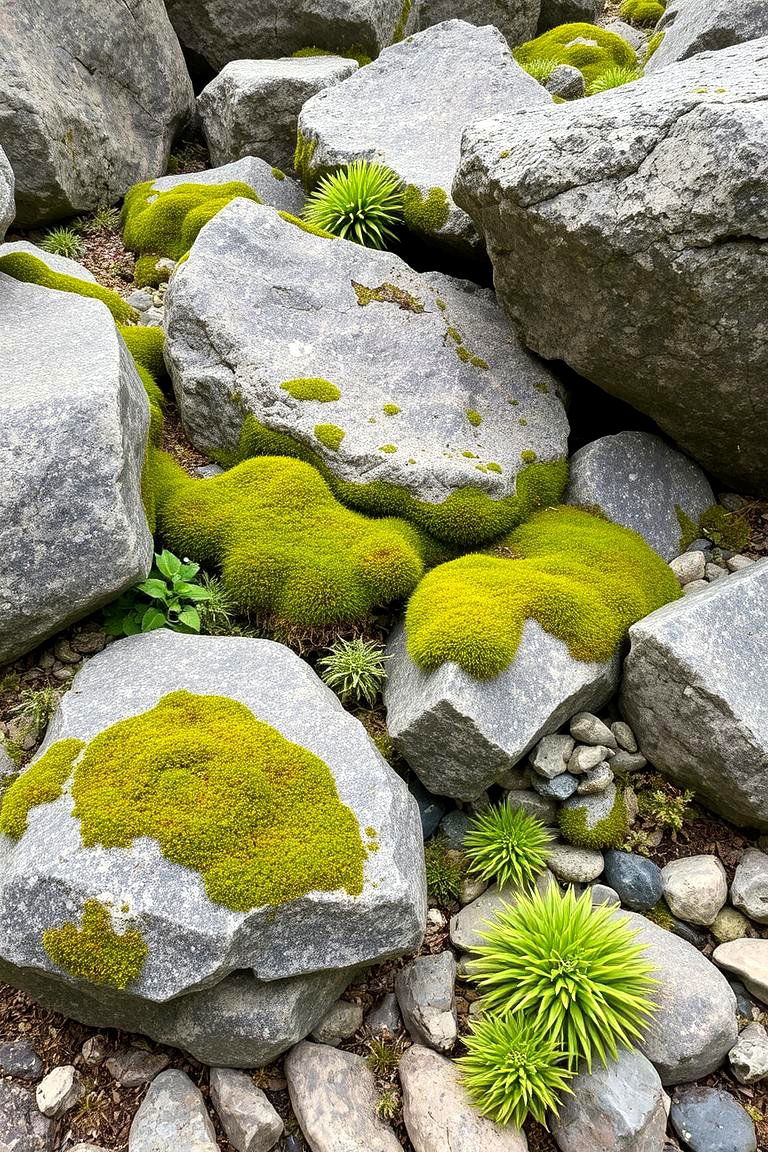
Rock gardens, or "shakkei" in Japanese, often feature a combination of rocks, moss, and carefully selected plants. These gardens are designed to create a natural, wild look, mimicking the landscape of mountains and valleys. The key benefit of a rock garden is its simplicity; it requires little maintenance and offers a dramatic, minimalist aesthetic. You can incorporate both large boulders and small pebbles, adding depth and texture to your garden while ensuring that it remains low-maintenance and visually captivating.
6. Japanese Moss Garden
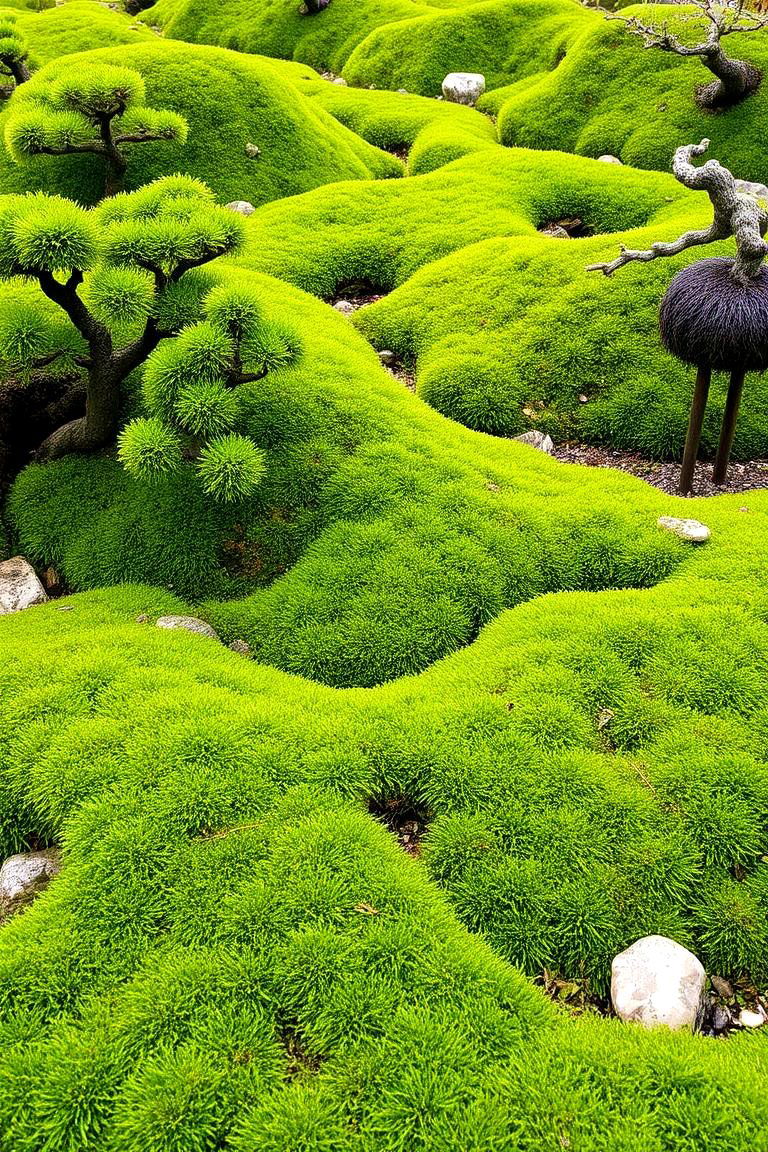
Moss gardens evoke a sense of ancient tranquility and are a key feature in many Japanese landscapes. Soft, velvety moss carpets the ground, creating a lush, green atmosphere that encourages reflection and peace. Moss requires little maintenance, making it a practical choice for shaded or damp areas. By incorporating moss alongside stones, small bonsais, and water features, you can create a space that feels timeless and serene. The moss garden’s greatest benefit is its ability to transform any space into a peaceful retreat with minimal upkeep.
7. Bonsai Display Garden
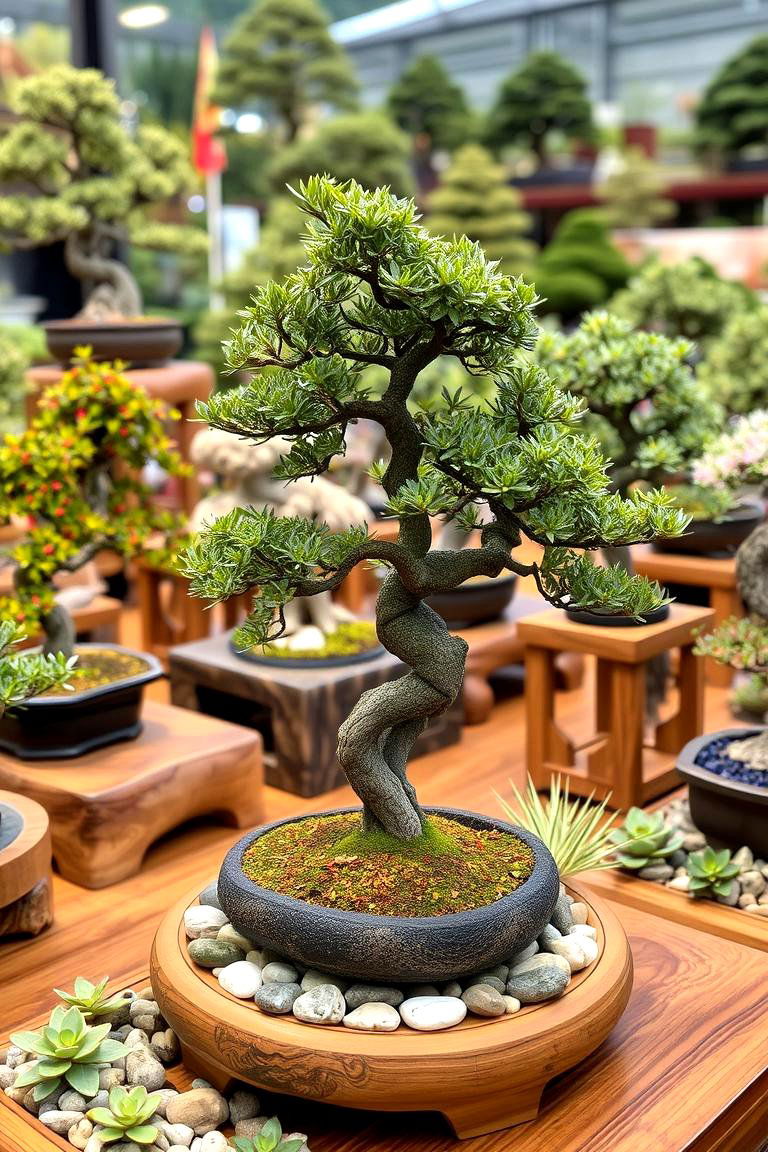
Bonsai trees are one of the most iconic elements in Asian gardens. These miniature trees are meticulously pruned and shaped to reflect the beauty of nature. A bonsai display garden is a place where you can showcase your collection of these tiny trees in a thoughtful, artistic way. The key benefit of a bonsai garden is its personal touch—it’s a reflection of your dedication to the art of bonsai cultivation. This landscaping style can be both meditative and rewarding, offering a space for care, learning, and appreciation of this ancient practice.
8. Courtyard Garden
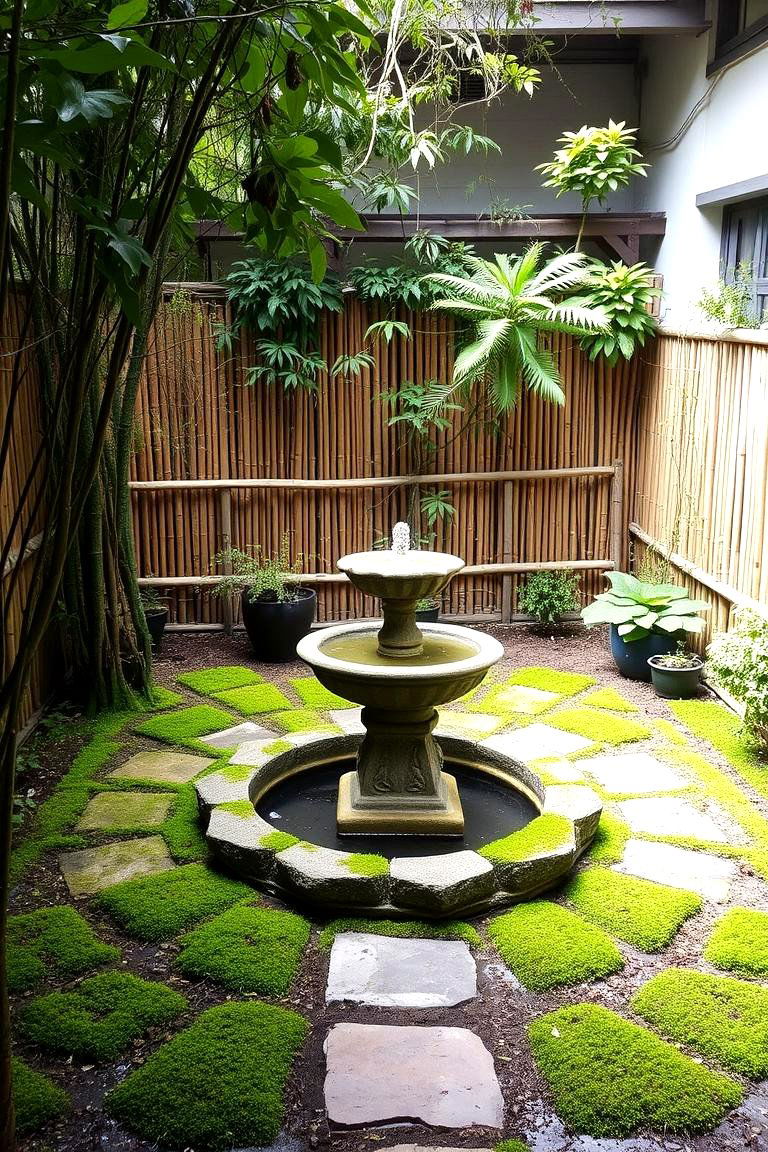
A courtyard garden is an enclosed outdoor space that serves as a private retreat. Often featuring bamboo, water elements, and stone pathways, this garden is designed for quiet moments of relaxation. The beauty of a courtyard garden lies in its intimacy; it’s a secluded, tranquil space perfect for reflection or entertaining. Courtyards offer the benefit of privacy and a controlled environment, ideal for those looking to create an oasis in a busy city. Incorporating lush plants and a central water feature can enhance its serene atmosphere.
9. Tropical Asian Garden
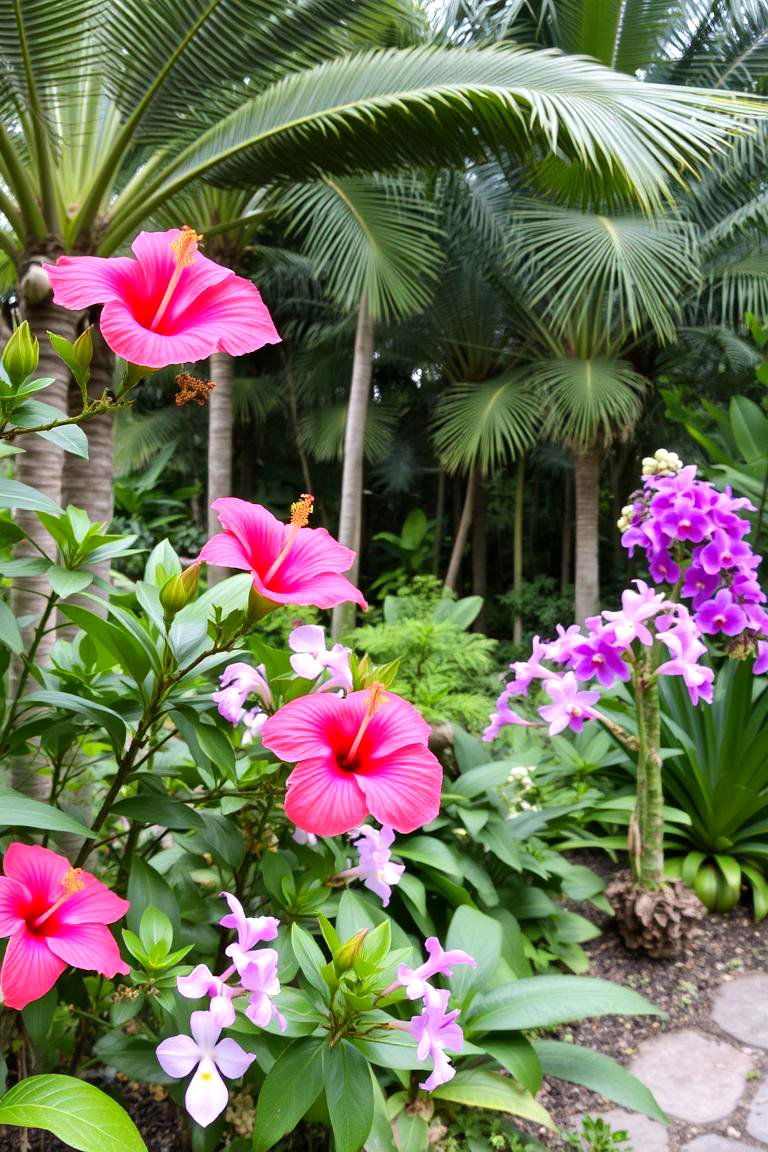
Tropical Asian gardens embrace vibrant colors, large-leaved plants, and plenty of exotic flowers. Incorporating plants like hibiscus, palm trees, and orchids can transform your backyard into a lush paradise. These gardens thrive in warm climates and offer the benefit of vibrant foliage and flowers throughout the year. The primary advantage of a tropical garden is its ability to create a lively and exotic atmosphere, with rich, saturated colors that provide a refreshing escape into nature.
10. Zen Sand and Stone Garden

The Zen sand and stone garden, known for its simplicity, creates a minimalist space designed to promote calmness and meditation. The white sand is carefully raked into patterns, and stones are strategically placed to symbolize nature’s elements like mountains or water. The key benefit of this style is its therapeutic nature. The act of raking the sand, or simply observing its patterns, can induce a meditative state, allowing for mindfulness and a sense of peace. It's perfect for small spaces that need a calm, reflective touch.
11. Japanese Maple Garden
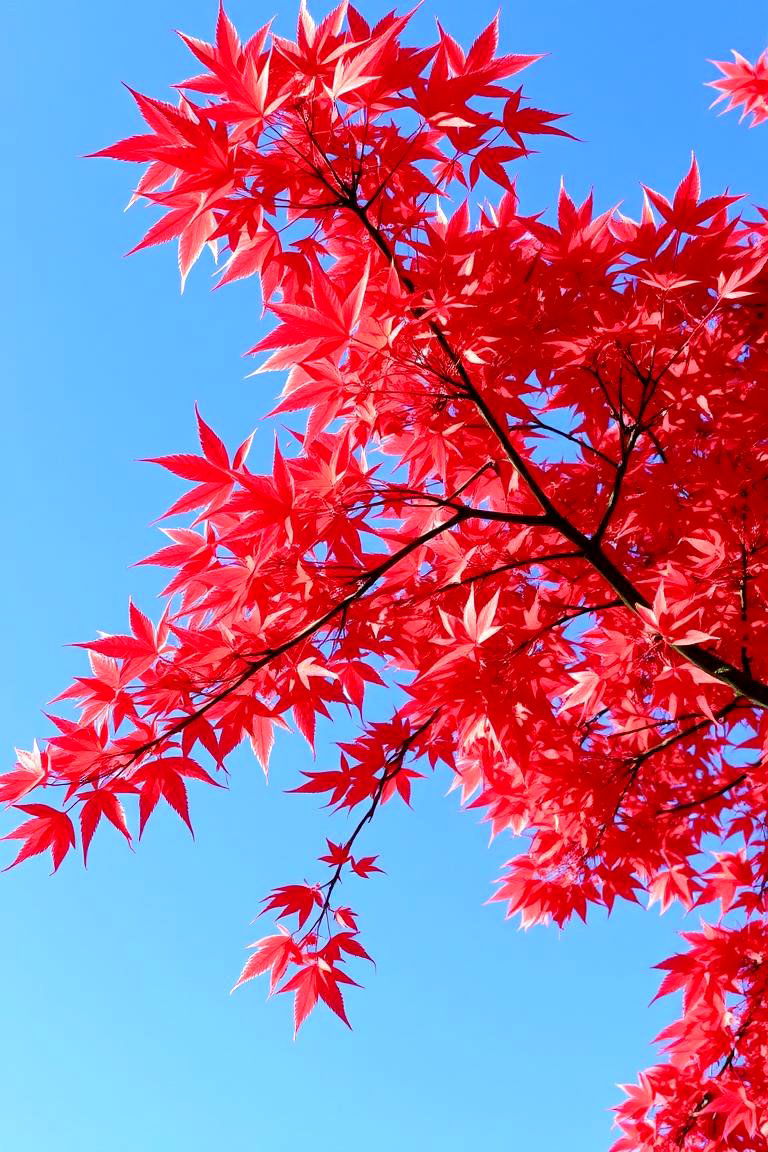
Japanese maples are stunning trees known for their graceful form and vibrant fall colors. A Japanese maple garden can transform your outdoor space by adding a sense of elegance and color throughout the year. The benefits of these trees include their beautiful foliage and the serene, gentle movement of their leaves in the wind. Placing them in strategic areas of your garden can help create focal points and bring year-round interest, especially in areas with distinct seasons. Their presence adds sophistication and charm to any garden.
12. Asian-Inspired Vertical Garden
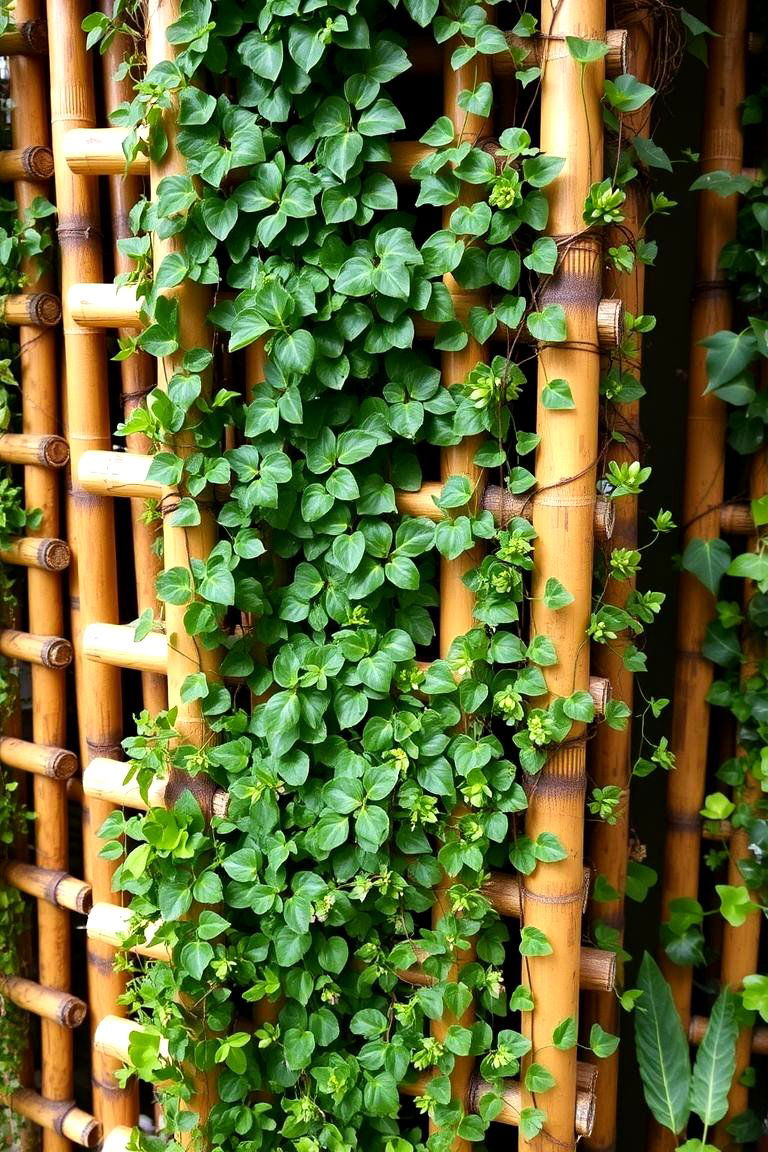
Vertical gardens are perfect for small spaces or urban environments where traditional landscaping may be limited. Asian-inspired vertical gardens use natural materials like bamboo or stone to create vertical structures where plants such as ivy, orchids, and succulents can grow. This method maximizes space and adds a dynamic visual element to your garden. The main advantage of a vertical garden is its ability to create a green wall, adding lush greenery without taking up valuable ground space.
13. Koi Pond Garden

Koi ponds are a beloved feature in Asian landscapes, symbolizing strength and perseverance. A koi pond garden typically includes calm water, colorful koi fish, and aquatic plants. The benefits of this type of pond are multifaceted—koi fish are not only beautiful to watch, but they also promote good feng shui. The pond provides a peaceful environment that encourages relaxation, while the vibrant colors of the fish add beauty and interest. Creating a koi pond is an investment in tranquility and natural beauty.
14. Bamboo Water Fountain Garden
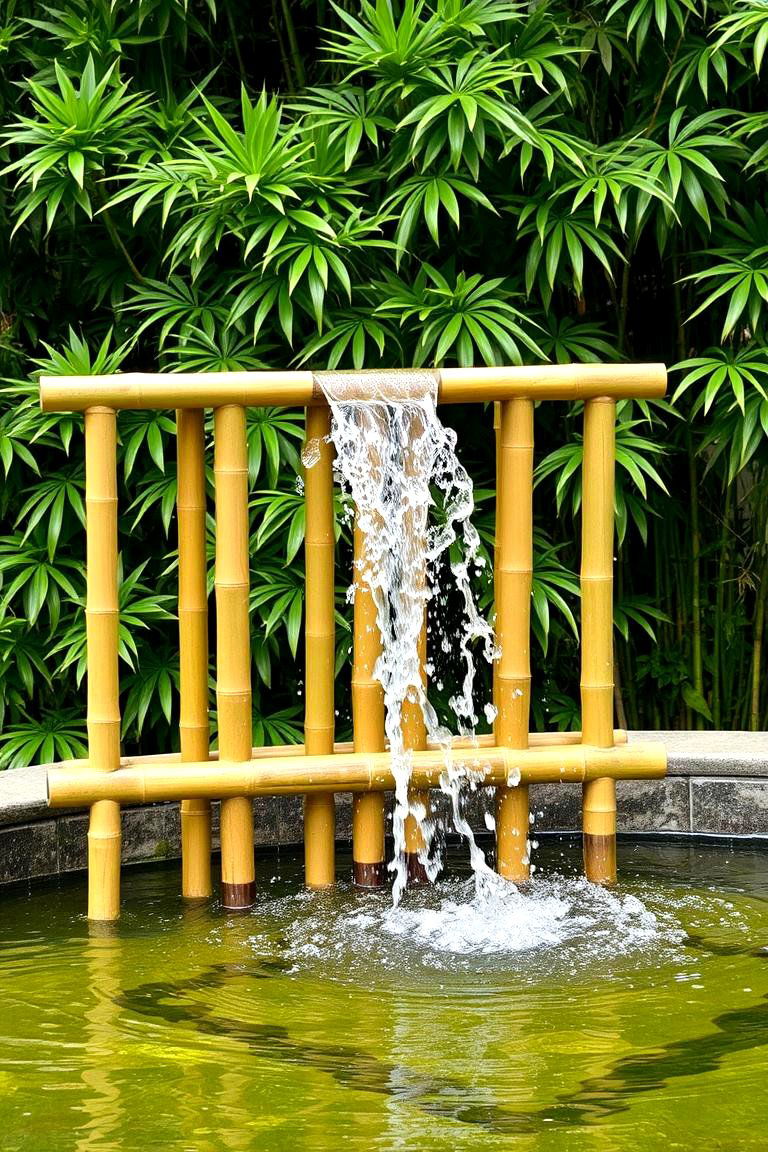
Bamboo water fountains are a traditional Asian feature that can enhance the soundscape of your garden. The sound of water trickling from bamboo tubes creates a soothing atmosphere. Bamboo fountains are often used in Japanese gardens to symbolize purity and renewal. The benefits of this feature include the calming sound of flowing water and the striking visual appeal of the bamboo structure. It’s a great addition to any garden that seeks to incorporate natural, calming elements.
15. Tea House Garden
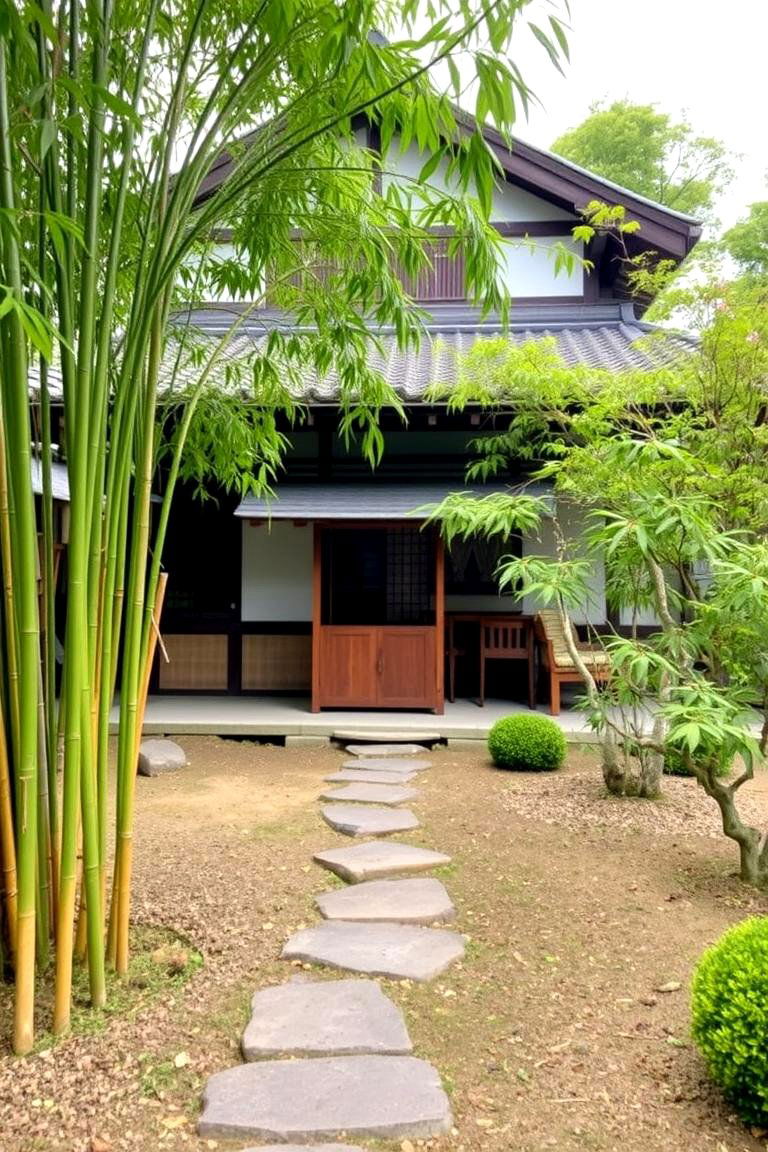
A tea house garden is a designated space for hosting intimate tea ceremonies or enjoying quiet moments outdoors. Typically, these gardens are filled with bamboo, stone paths, and a small, wooden tea house. The benefits of having a tea house garden include providing a peaceful escape where you can connect with nature while practicing the art of tea. It's an ideal space for those who enjoy mindfulness, traditional practices, and the simple joys of tea.
16. Asian Waterfall Garden
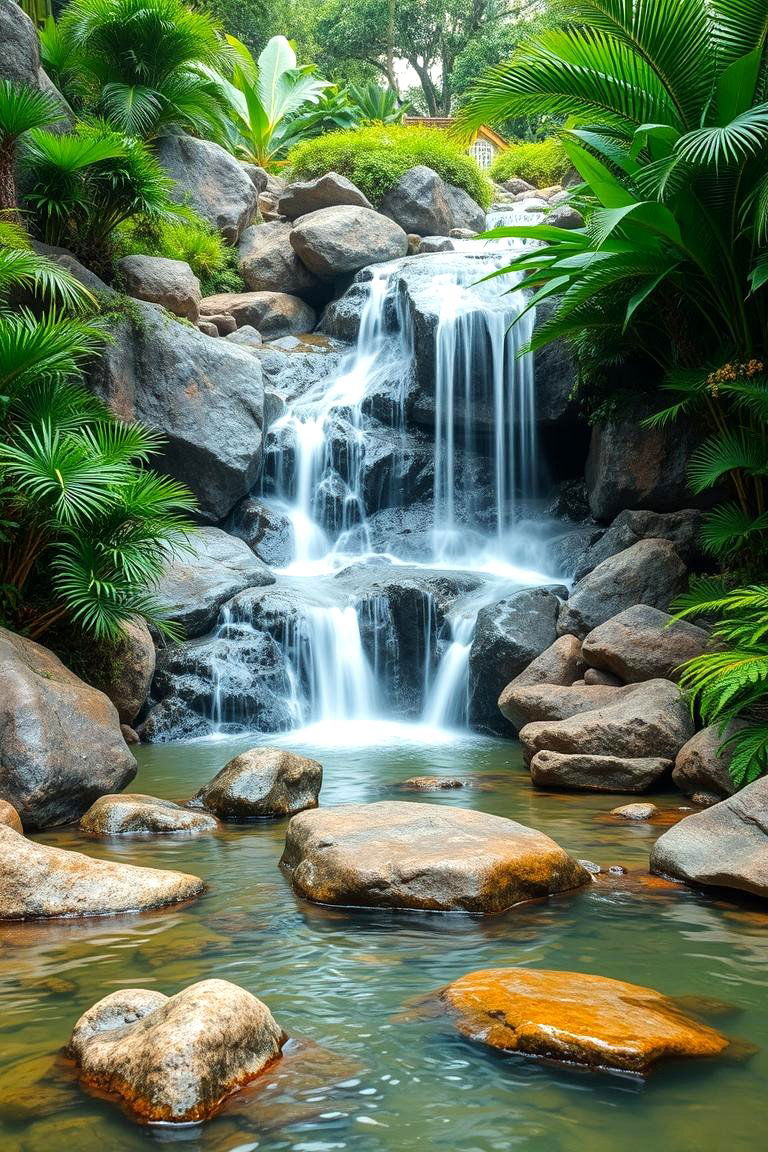
Waterfalls are an iconic feature of many Asian landscapes, symbolizing life’s constant flow and the beauty of nature. An Asian waterfall garden incorporates cascading water, often surrounded by rocks, lush plants, and soothing sounds. The main benefit of this style is its ability to create a focal point and a tranquil atmosphere. Waterfalls also help improve the overall ambiance by adding movement and sound to the landscape. Whether it's a small, gentle stream or a larger, more dramatic cascade, a waterfall brings life to any garden.
17. Lotus Pond Garden
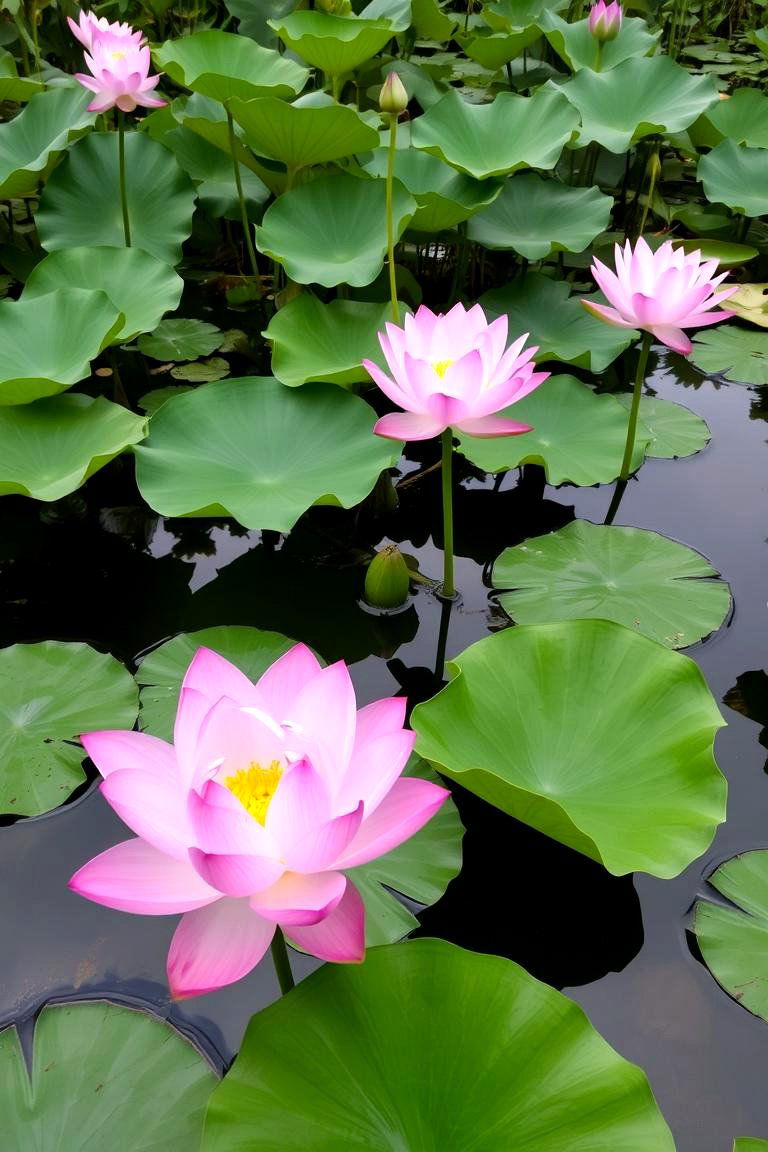
Lotus ponds are a serene and beautiful addition to any Asian-inspired garden. The lotus, a symbol of purity, blooms beautifully above the water’s surface. The benefits of a lotus pond include creating a calm, reflective space and providing an elegant focal point. The soft colors of the lotus flowers can transform any garden into a peaceful oasis, while the aquatic plants that surround them create an atmosphere of tranquility. A lotus pond offers a serene space to escape into nature.
18. Pagoda Garden
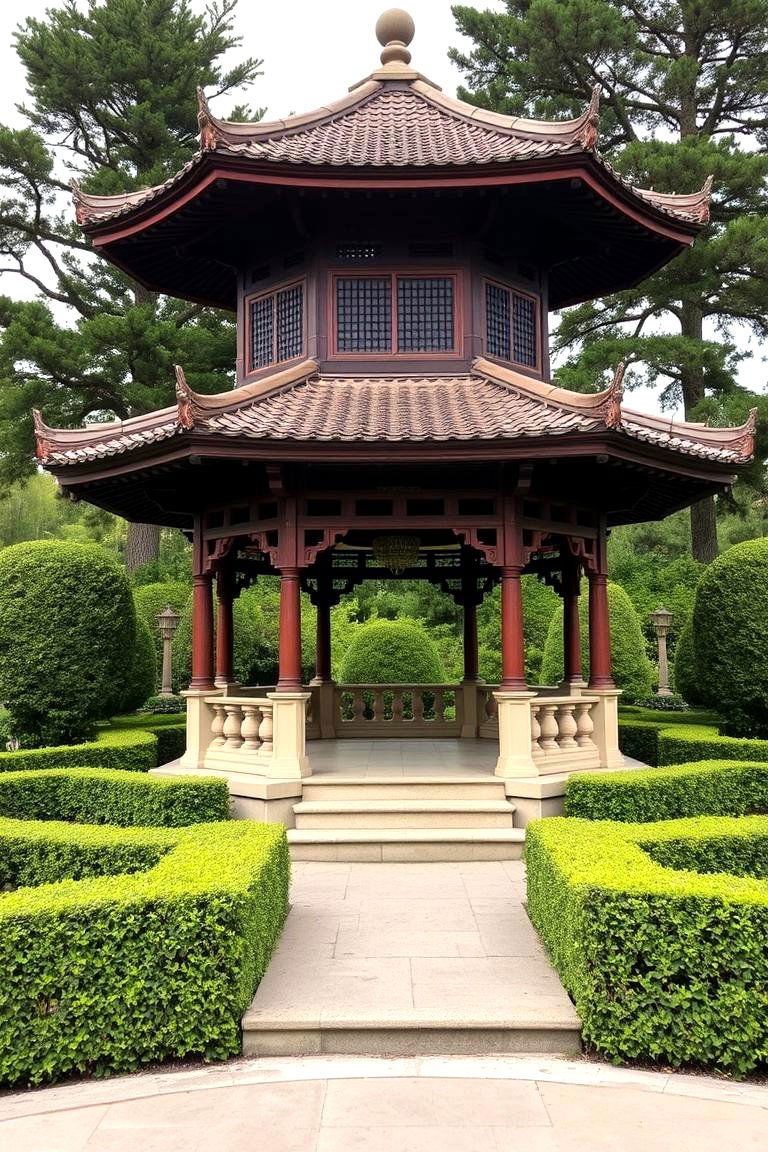
The pagoda is a traditional Asian structure often used in gardens to create a sense of height and elegance. Featuring tiered roofs, intricate details, and sometimes a small seating area, pagodas add visual interest and depth to a garden. The key benefit of a pagoda garden is its ability to create a focal point and provide a place for contemplation or relaxation. It’s a beautiful way to elevate the design of any garden while maintaining an air of simplicity and peace.
19. Asian Herb Garden
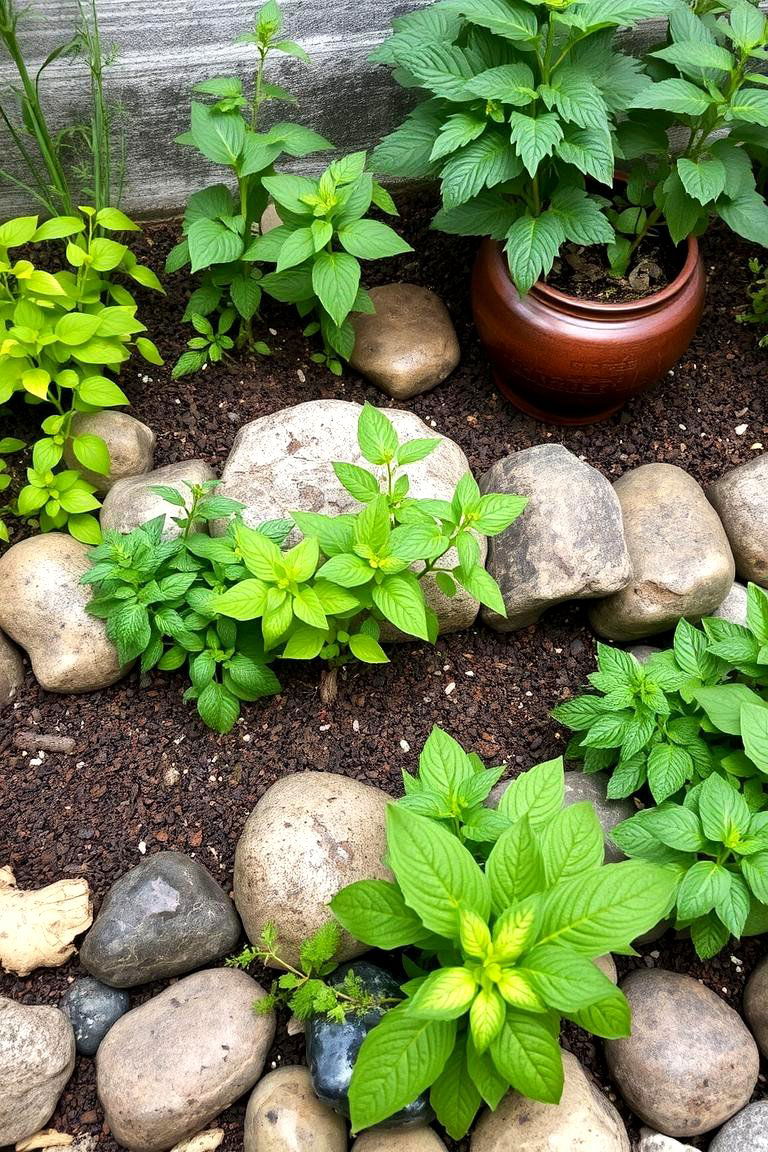
An Asian herb garden is filled with plants that are used in traditional Asian cooking and medicine. Herbs like ginger, basil, and mint not only offer culinary benefits but also add fragrance and texture to the garden. The benefit of having an herb garden is that it allows you to grow your own ingredients, bringing the flavors of Asian cuisine directly to your kitchen. Plus, herbs like these can thrive in small spaces, making this a perfect option for urban gardeners.
20. Tranquil Bamboo Pathway
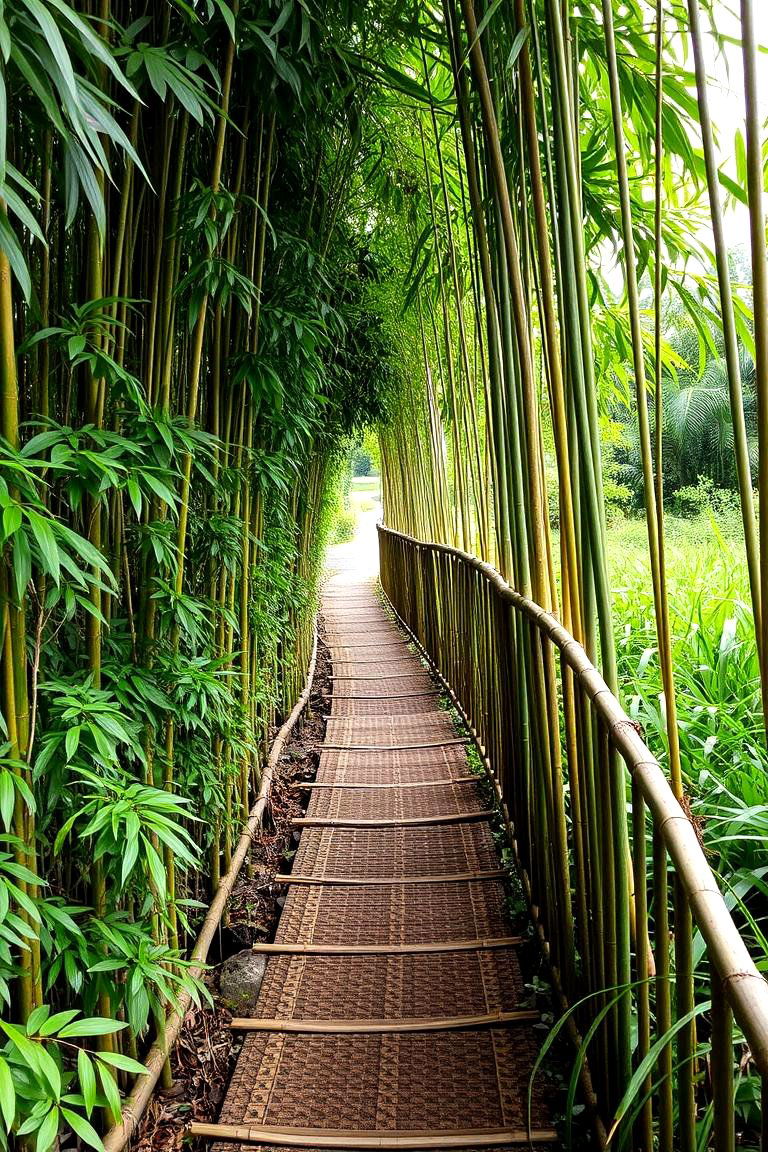
A bamboo pathway is a beautiful and simple way to enhance your garden’s design. Using bamboo poles or bamboo shoots, this pathway can lead visitors through a lush, green garden, creating a natural and soothing atmosphere. The key benefit of a bamboo pathway is that it helps guide the flow of traffic while enhancing the aesthetic of the garden. It’s a lovely, functional feature that can work well in gardens of any size, adding a sense of serenity and connection with nature.
21. Tropical Garden with Waterfall
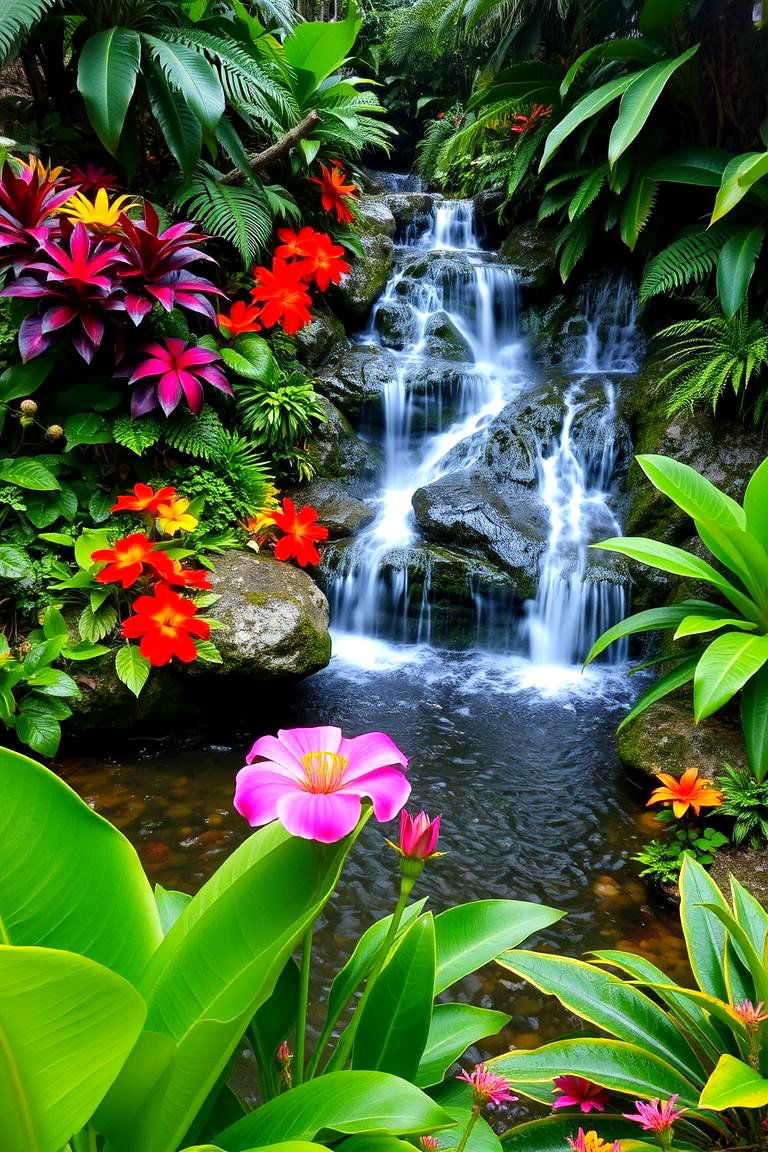
Combining tropical plants and a cascading waterfall creates a dynamic, vibrant garden full of color and energy. The tropical plants, with their lush green foliage and bold flowers, thrive next to the flowing water. The main benefit of this combination is its ability to create a bold and exotic atmosphere that energizes your space. It’s an excellent option for those who enjoy a vibrant, dynamic garden filled with life and movement.
22. Japanese Garden with Sand and Stones
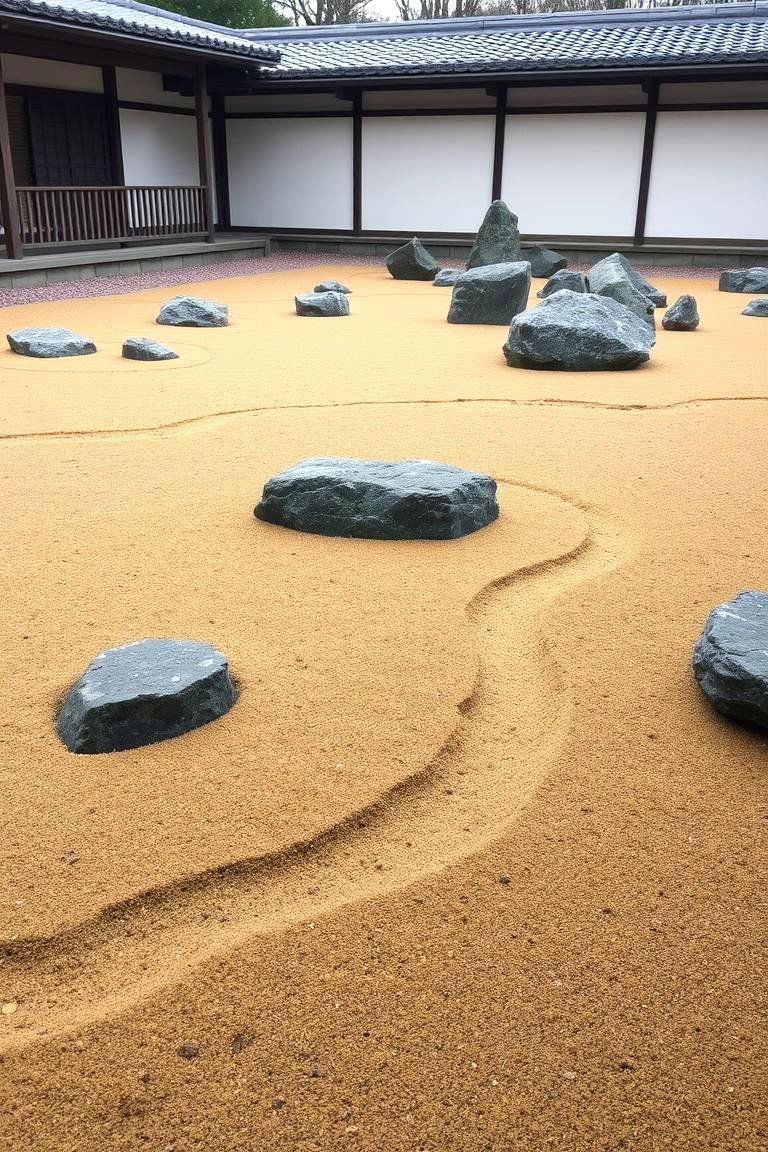
A Japanese garden featuring sand and stones is a traditional design that symbolizes nature’s balance. The clean, minimalistic lines of the sand are complemented by carefully placed rocks, which represent mountains or other natural features. The benefit of this garden style is its ability to promote peace and balance, providing a quiet, meditative environment. The simplicity and symbolism of the design help cultivate mindfulness and appreciation for nature's beauty.
23. Stepping Stone Garden
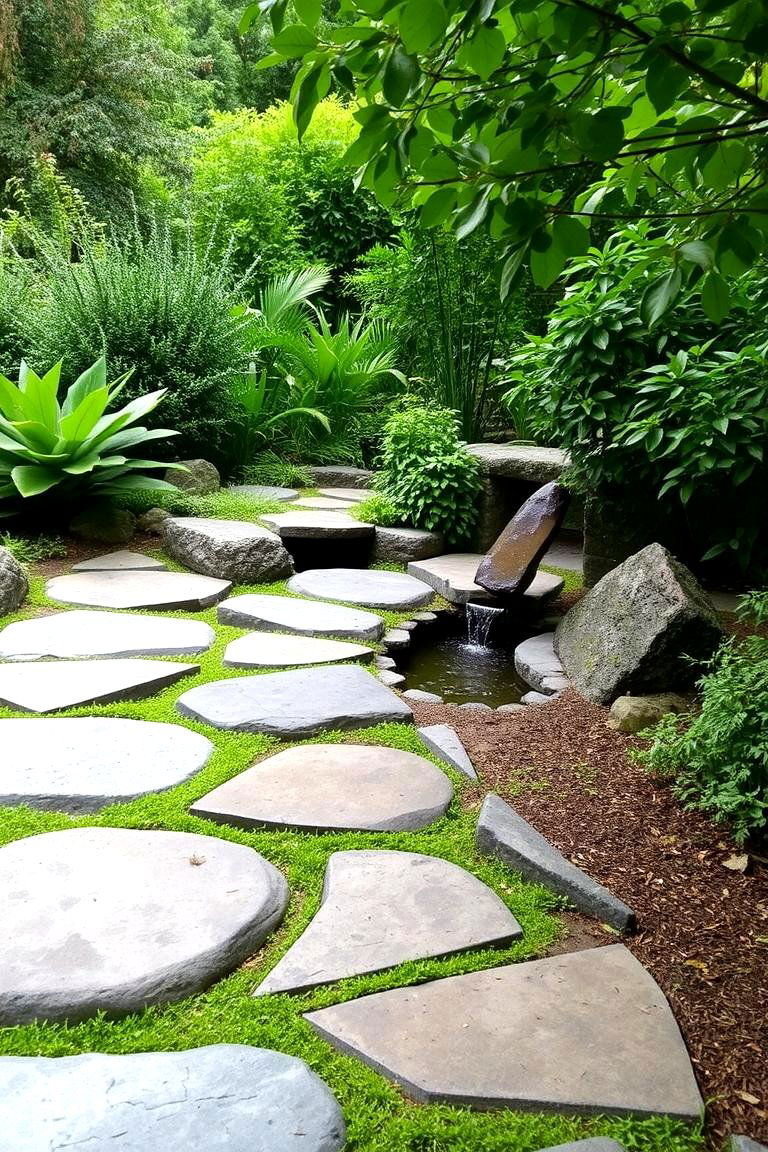
Stepping stones create a charming, practical path through your garden. They can be placed strategically to lead visitors through different areas of your space. The benefits of stepping stones are twofold: they provide functional pathways while also adding visual interest. Whether you're using large stones for a bold look or smaller ones for a more delicate appearance, stepping stones enhance your garden’s accessibility and design.
24. Scented Flower Garden
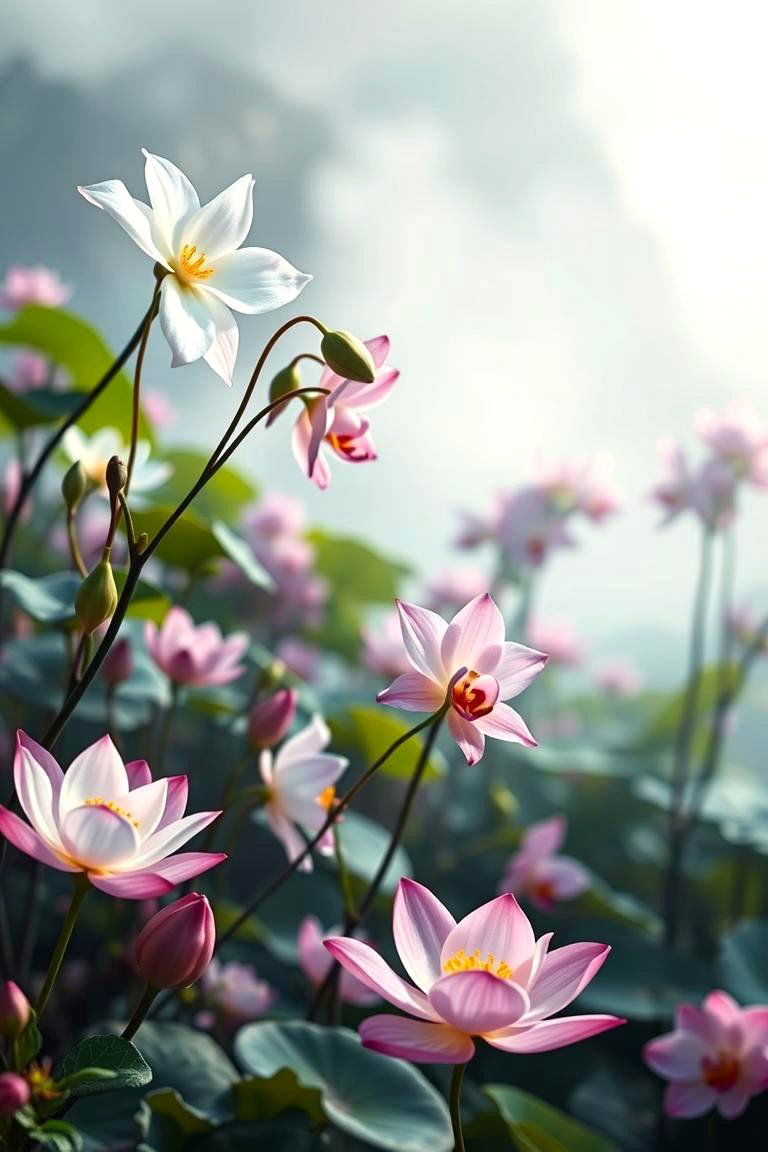
Incorporating fragrant flowers such as jasmine, lotus, or orchids into your garden adds a sensory dimension to your outdoor space. The key benefit of a scented flower garden is the ability to enjoy both visual and aromatic beauty. These plants provide natural fragrances that fill the air, creating a relaxing atmosphere. Perfect for those who want to enhance their garden with multi-sensory experiences, a scented flower garden brings both beauty and peace to any setting.
Conclusion:
Asian landscaping offers a rich variety of styles that cater to different preferences and spaces. From tranquil Zen gardens to vibrant tropical retreats, these designs promote peace, balance, and natural beauty. The incorporation of water features, unique plant life, and architectural structures makes Asian gardens perfect for creating an atmosphere of relaxation and harmony. Each idea can be customized to suit your specific needs, providing both aesthetic and practical benefits. Take inspiration from these 24 ideas to transform your outdoor space into a serene, beautiful sanctuary.


